American Airlines Philadelphia-Dubrovnik Flights Won't Return for 2022 Summer
December 12, 2021 - The latest flight news to Croatia as American Airlines Philadelphia-Dubrovnik flights will not resume next summer.
Ex Yu Aviation reports that American Airlines will not resume its Philadelphia-Dubrovnik flights for the 2022 summer season. While the airline successfully maintained the route in the 2019 summer, it did not return the following year with additional flights and capacity due to the COVID-19 pandemic.
But Dubrovnik isn't the only victim of American Airlines. Ex Yu Aviation adds that the airline won't resume seasonal flights to Prague and has discontinued operations to Edinburgh, Shannon and Hong Kong. The airline will, however, operate from New York to Doha, Qatar.
"Boeing continues to be unable to deliver the 787s we have on order, including as many as thirteen aircraft that were slated to be in our fleet by this winter. Without these widebodies, we simply won’t be able to fly as much internationally as we had planned next summer or as we did in summer 2019," said Vasu Raja, American’s Chief Revenue Officer.
United, on the other hand, has announced it would return to Dubrovnik next summer.
United introduced a regular line between Dubrovnik and New York in early July this year. Three flights a week were announced which quickly increased to four times a week from the beginning of July to the beginning of October this year.
Encouraged by the great interest, the airline announced that traffic between Dubrovnik and New York would run in the summer flight schedule next year.
Unlike this year, United Airlines plans to launch the first flight between Dubrovnik and New York at the end of May (May 27, 2022). This summer season, the last flight was at the very beginning of October, and for next year, United plans regular operations until the very end of October (October 26, 2022). Thus, this line will be in traffic for a full two months longer next summer compared to this season.
Delta Air Lines, which also operated regularly between New York and Dubrovnik this summer, has not yet released tickets on this route for next summer. If this route doesn't relaunch, United may increase its capacity to Dubrovnik, either by introducing a larger type of aircraft or by increasing weekly rotations. Only time will tell.
For more on flights to Croatia and other travel announcements, make sure to check out our dedicated travel section.
Plaque Unveiled in Dubrovnik to Wartime Photographer Pavo Urban
ZAGREB, 6 Dec 2021 - A memorial plaque was unveiled in Dubrovnik under a clock tower where wartime photographer Pavo Urban was killed by shrapnel during the fierce shelling of Dubrovnik's old town on 6 December 1991.
The ceremony was held on the occasion of the 30th anniversary of the heroic defense of Dubrovnik during the Homeland War and Dubrovnik Defenders Day. Urban's family attended the unveiling ceremony which was conducted by Mayor Mato Franković and the prime minister's envoy, Agriculture Minister Marija Vučković.
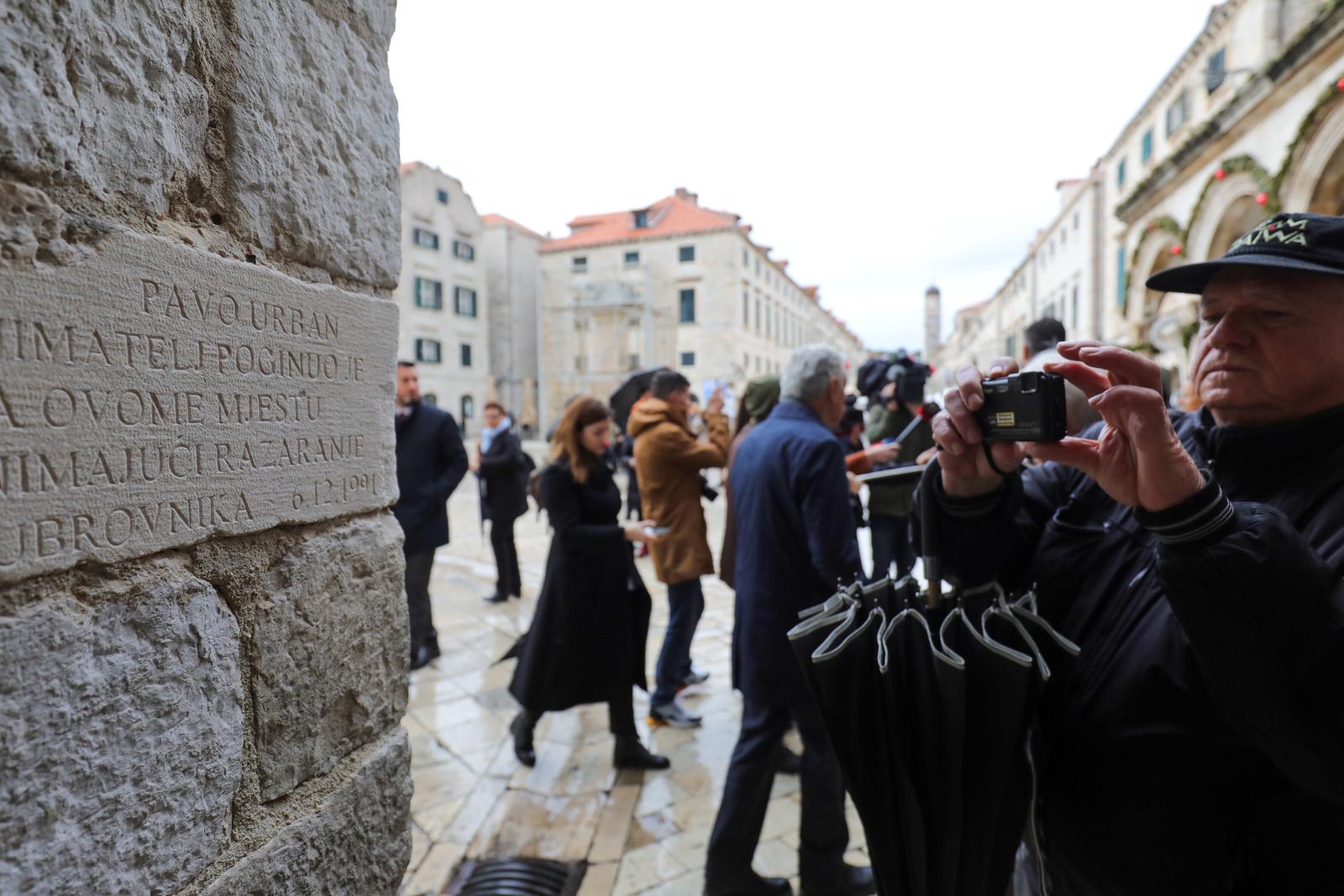
(Photo: Grgo Jelavic/PIXSELL)
Minister Vučković underscored that Urban's photographs are remembered because the world saw the culturecide that occurred in Dubrovnik and Croatia.
"Urban's photographs bring documentary directness but also an incredible artistic experience," the agriculture minister said.
Mayor Franković said that Urban gave the most valuable thing he had, his life, in exchange for the truth and to bear witness to Dubrovnik's suffering and destruction and to present it for the world to see.
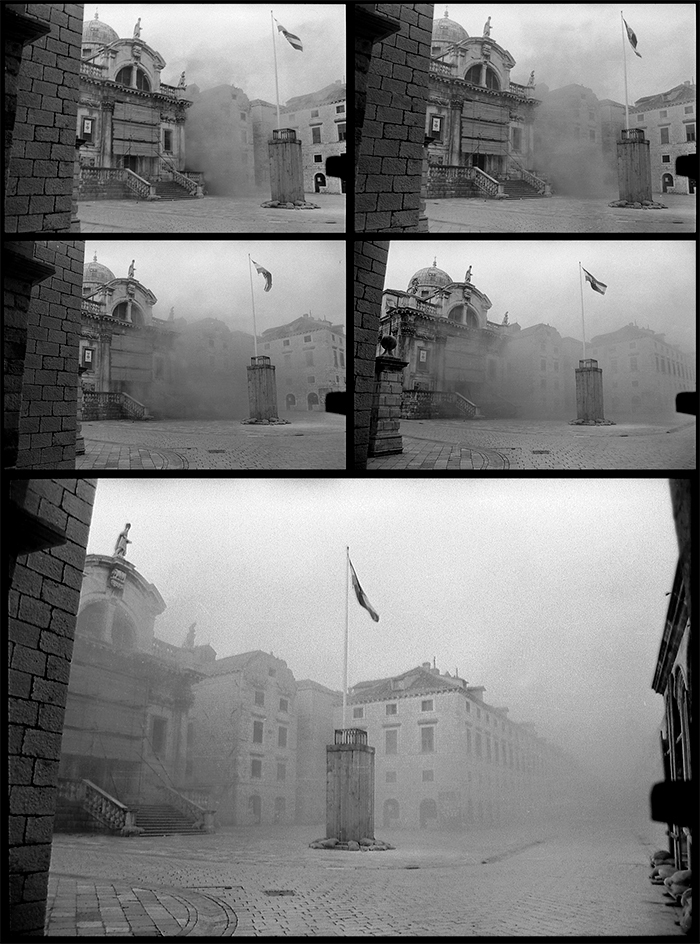
The last photographs ever taken by Pavo Urban, before he was killed during shelling in Dubrovnik on December 6, 1991. Photos: Pavo Urban.
The program marking the 30th anniversary of Dubrovnik's defense ends on Tuesday with the launch of a book by Nikola Obuljen, "How we Negotiated with the Enemy".
For more on politics, follow TCN's dedicated page.
For more, check out our dedicated lifestyle section.
Online Campaign Launched for 30th Anniversary of Massive Shelling of Dubrovnik
ZAGREB, 6 Dec 2021 - SENSE Transitional Justice Center has launched a video about the 6 December 1991 massive shelling of Dubrovnik, and the video is part of the interactive narrative "Targeting History and Memory".
SENSE Transitional Justice Center is the successor to SENSE News Agency dedicated to documenting and making permanently accessible the facts about wars in the area of former Socialist Yugoslavia, established beyond a reasonable doubt at the ICTY in The Hague.
The shelling of the Old City of Dubrovnik was qualified in International Criminal Tribunal for the Former Yugoslavia (ICTY) indictments and judgments as to the "destruction or deliberate damaging of institutions dedicated to religion, charity and education, arts and science, historical monuments, and works of art and science."
The five-day online campaign about the destruction of Dubrovnik was launched on 4 December and brings about the contents of the ICTY's investigation, documents, and trial about the war atrocities committed by the Yugoslav People's Army (JNA) and Serbian and Montenegrin paramilitaries during the siege of Dubrovnik in 1991 and 1992.
The five-day internet campaign can be watched on Facebook, YouTube, and the SENSE Transitional Justice Center's official website.
30th anniversary of an all-out assault on Dubrovnik
The siege of Dubrovnik culminated in an all-out assault on 6 December 1991 when the JNA and Serbian and Montenegrin paramilitaries targeted the medieval walled town with all types of weapons, killing 19 defenders and civilians and wounding another 60 people. Thousands of shells fell on the historical center, nine palaces were burnt to the ground and 461 buildings were severely damaged that day.
During the siege, this Adriatic town lived mostly without electricity or freshwater. The JNA swept through the surrounding villages looting houses and razing them to the ground. Villagers fled to Dubrovnik or to the islands, some of the elderly who could not flee were taken off to war camps in Morinj, Montenegro, or to Bileća in Serb-controlled Bosnia and Herzegovina.
During the war in a wider Dubrovnik area, 116 civilians and 430 Croatian soldiers were killed and several hundred were injured. As many as 443 Croats were taken to detention camps, and as many as 33,000 had to flee their homes during the siege and the JNA attacks.
Several commemorative events will take place in Dubrovnik to mark the 30th anniversary of the all-out attack.
For more on politics, follow TCN's dedicated page.
Dubrovnik Winter Festival Kicks Off This Saturday With a Magical Program
November 24, 2021 - This Saturday the program of the 8th Dubrovnik Winter Festival will begin with the lighting of the first Advent candle and the Christmas lighting in the city, which will last for 40 days.
As Turističke Priče reports, the program of the 8th Dubrovnik Winter Festival event will begin on Saturday, November 27, with the lighting of the first Advent candle. On the same day, the holiday lighting will be turned on, which will complete the magic of this year's holidays for 40 days, and there will be a concert by Nena Belan & Fiumens in front of the Church of St. Vlaho.
The center of events returns to Stradun where the people of Dubrovnik and their visitors will have the opportunity to enjoy six concerts. Thus, on December 11, the group Magazin will perform, and on December 29, Marko Škugor will sing. The celebratory atmosphere on the last day of 2021 will begin at noon when Dubrovnik bartenders will prepare New Year's cocktails in front of the City Café, and the rock New Year's Eve will be prepared by Silente and Vatra with spectacular fireworks at exactly midnight.
Traditionally, on January 1, a waltz will be danced on the Stradun with the Dubrovnik Symphony Orchestra, while the Rišpet klapa will take care of the evening entertainment on the first day of the new year on Stradun.
The charity concert for the Covid ward of the Dubrovnik General Hospital will be held on Monday, December 6, at the Valamar Lacroma Hotel. Music diva Tereza Kesovija, klapa Ragusa and Ženska klapa FA Linđo will perform accompanied by the Dubrovnik Symphony Orchestra. Under the direction of maestro Huta, the DSO will traditionally perform at the Dubrovnik Christmas Concert to be held on Sunday, December 19, and on that occasion soprano Valentina Fijačko, tenor Roko Radovan, vocals Goran Karan, Lucija Pećar and Nikoleta Ivanković and the klapa Ragusavecchia. As for the concerts on Stradun, entry will be possible upon presentation of the EU digital COVID certificate.
From 16 to 19 December, the Dubrovnik Tourist Board, in cooperation with Dubrovnik restaurants, will organize the traditional "Cod Days" when many restaurants will be able to taste the holiday gastronomic treat cod, prepared in various ways.
Saturday mornings will traditionally be marked by the performance of the Folklore Ensemble Linđo with free tourist sightseeing organized by the Dubrovnik Tourist Board, while Saturday afternoons will be reserved for also free, thematic guided tours called "Golden Age of Dubrovnik" organized by the Marin Držić Home.
For the youngest on Friday, December 10, the North Pole Station will open its doors in Lazareti, and Lapad Bay will be enriched this year by the "Colorful Winters" program as well as the Advent train, which will run its small passengers for free every day from 10 am to 4 pm. This year, too, there will be a visit by Moto Mrazova, who will arrive on Stradun on December 26. Last year's novelty Pop-up Kolenda bus will delight everyone who meets it, and passengers will delight the youngest with sweet gifts.
Dubrovnik kindergartens and primary schools will once again decorate the windows of the City as part of the Marin Držić Home project "Advent Calendar on Stradun", and all lovers of good photography, except for the "photo point" location under the Advent wreath on Luža, expect a new one in the Rector's Palace atrium.
Dubrovnik cultural institutions have prepared various contents for the Dubrovnik Winter Festival for all ages, from exhibitions, lectures, and workshops to plays, so the Marin Držić Theater will perform its favorite Nutcracker in November and December in the version of Lada Kaštelan.
All programs of the 8th Dubrovnik Winter Festival will take place in accordance with the current recommendations for the prevention of COVID-19 infection, published by the Croatian Institute of Public Health. To attend the events, it will be necessary to register in advance with the institution or organizer of the event that is planned to visit.
For more, make sure to check out our dedicated lifestyle section.
4 easyJet Summer Lines to Dubrovnik and Split Canceled in 2022
November 23, 2021 - The latest news on flights to Croatia as 4 easyJet summer lines to Dubrovnik and Split have been canceled for the 2022 season.
The British low-cost airline easyJet has canceled some seasonal routes to Croatia, despite announcing that the airline will significantly increase its capacity to Croatian airports next summer. This is due to financial troubles, which began before the pandemic, reports Croatian Aviation.
As the Ex Yu Aviation announced earlier, easyJet withdrew three lines to Dubrovnik and one to Split. The airline claims that the lines with the least passenger interest were withdrawn from sale.
Namely, lines between Luton, Milan, Toulouse, and Dubrovnik are no longer on sale, and the line between Belfast and Split has been canceled. In addition, the airline has not launched several other lines to Croatia this summer season, justifying the move by low demand due to the pandemic.
easyJet currently offers 40 international routes to Croatia next summer, but there will be operational changes at the beginning of the summer season. The Croatian Tourist Board points out that the airline showed great interest in Croatia at the World Travel Market in London, and even announced negotiations with Rijeka and Osijek on establishing regular routes to the two mentioned airports.
For now, the largest number of easyJet lines is offered to Split (14), Dubrovnik (12), Pula (9), and Zadar (5).
The airline also points out that they will announce new routes to Croatia in the coming months, emphasizing the importance of Croatia as a traditional destination of this airline. Negotiations on introducing new lines for next summer are underway. It should be noted that easyJet is one of the largest users of joint advertising, for which the Croatian Tourist Board is announcing a tender.
Croatian Aviation adds that easyJet is slowly but surely losing its share of transported passengers on the Croatian market, primarily due to the new lines of Ryanair and Wizz Air, which also have yet to announce summer programs for next year.
For more on flights to Croatia and other travel announcements, make sure to check out our dedicated travel section.
Agreement for Procurement of 18 Buses Signed in Dubrovnik
ZAGREB, 22 Nov 2021 - An agreement was signed in Dubrovnik on Monday for the procurement of 18 new buses for Dubrovnik's public transportation bus company, worth almost HRK 38.7 million (€5.16 million) of which 85% will be provided by the European Union.
The Libertas bus company will, thus, renew its fleet with two articulated low-floor buses, six mini low-floor buses, seven mini urban-suburban buses, and three midi suburban buses. As many old buses will be taken off the roads.
Mayor Mato Franković announced that traffic around the historical old town will soon be restricted to vehicles of local residents and public transport.
"I believe that visitors to the city will choose Libertas as the simplest and easiest form of transport to the historical old town," said Franković.
The bus company's director, Franko Mekišić, said citizens will directly feel the benefit of the procurement because the buses meet the newest standards and ecological norms.
"This will reduce the overall age of vehicles from 12 to 9 years. We currently have 110 vehicles, 80 of which are in use. We are intensively working on absorbing certain EU funds in the coming period to procure more buses," said Mekišić.
For more on politics, follow TCN's dedicated page.
Summer in Croatia Through the Lens of Croatian Photographer Timotej Gošev
November 20, 2021 - ''I want people to look at my photographs, and simply desire to be right there in the place their eyes are seeing'', says Timotej Gošev, better known as Timotej on Instagram, inviting thousands of people every day to experience the Adriatic summer through his photographs. Total Croatia News managed to interview the photographer with Varaždin roots.
In what ways can photography positively impact the promotion of tourism in Croatia? The question may sound simple to answer, but nowadays photography can be manipulated in such a way that the first impression of a tourist upon arriving at his destination is one of disappointment. It happens in many parts of the world. The use of visual content, to be used responsibly and strategically, can be essential to make Croatia known around the world.
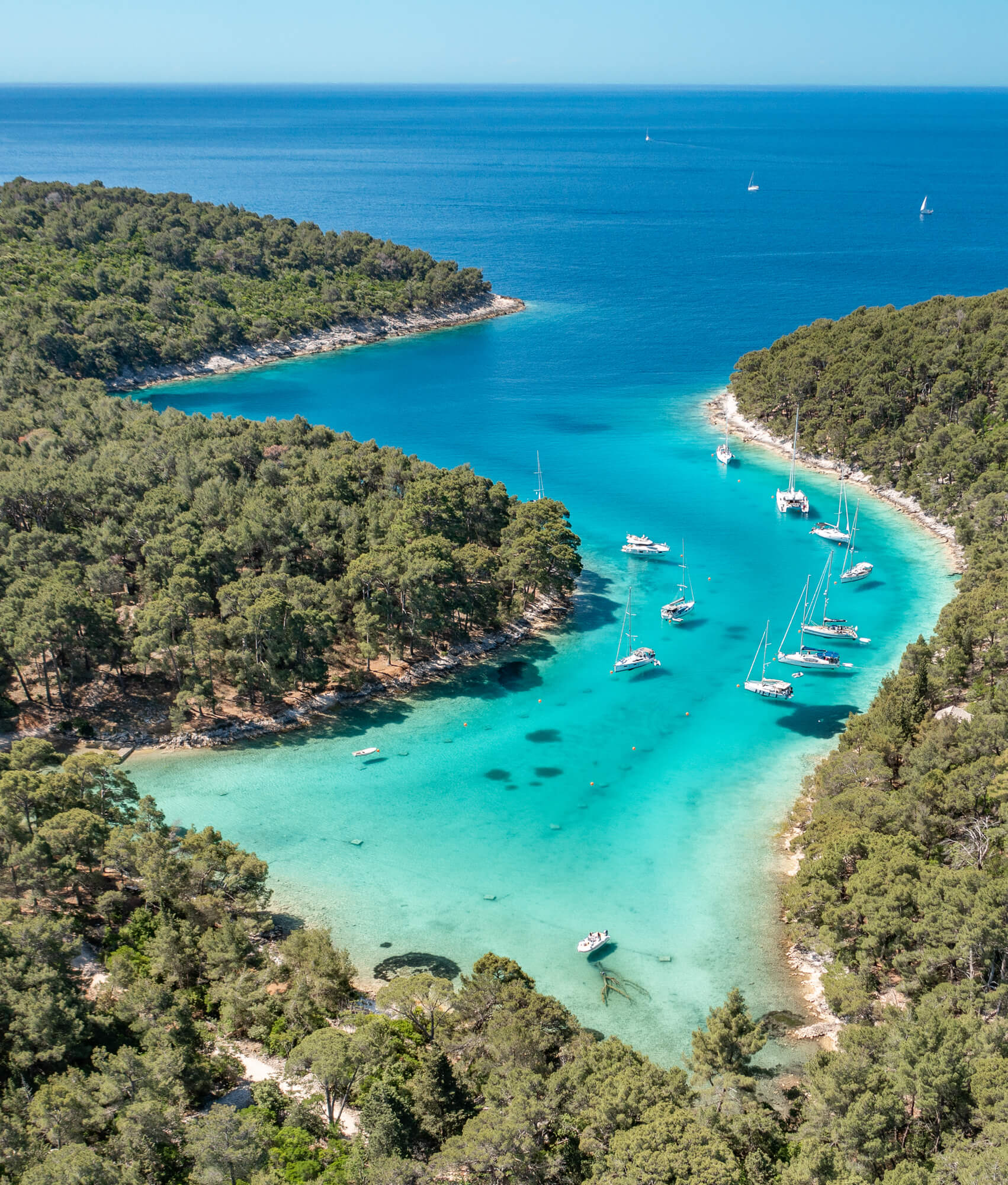
Krivica Cove and beach, Lošinj (Photo: Timotej Gošev)
Now I live in Croatia, but for 24 years of my life, my only reference was what I saw on the internet and on social networks. Now that I have spent two summers here, I can attest that Croatia has the advantage of meeting the expectations of those who came with a preconceived image in their heads. Those turquoise and transparent waters that you see in photos and videos, they are like that! But the Adriatic coast of Croatia is very extensive, and to it, we must add its more than 700 islands. Imagine the number of remote and wonderful places along almost 6000 kilometers of coastline that must exist to fulfill your fantasy of an Adriatic summer. Well, a Croatian photographer is dedicated to exploring, capturing, and sharing the magic of these places with his thousands of followers.
If you have looked for photos of Croatia to corroborate what everyone is surely saying about it, chances are that you have come across Timotej's photos. Also, if you have seen one of his photos, it is most likely that you have already bought your air ticket to spend the following summer in the Adriatic.
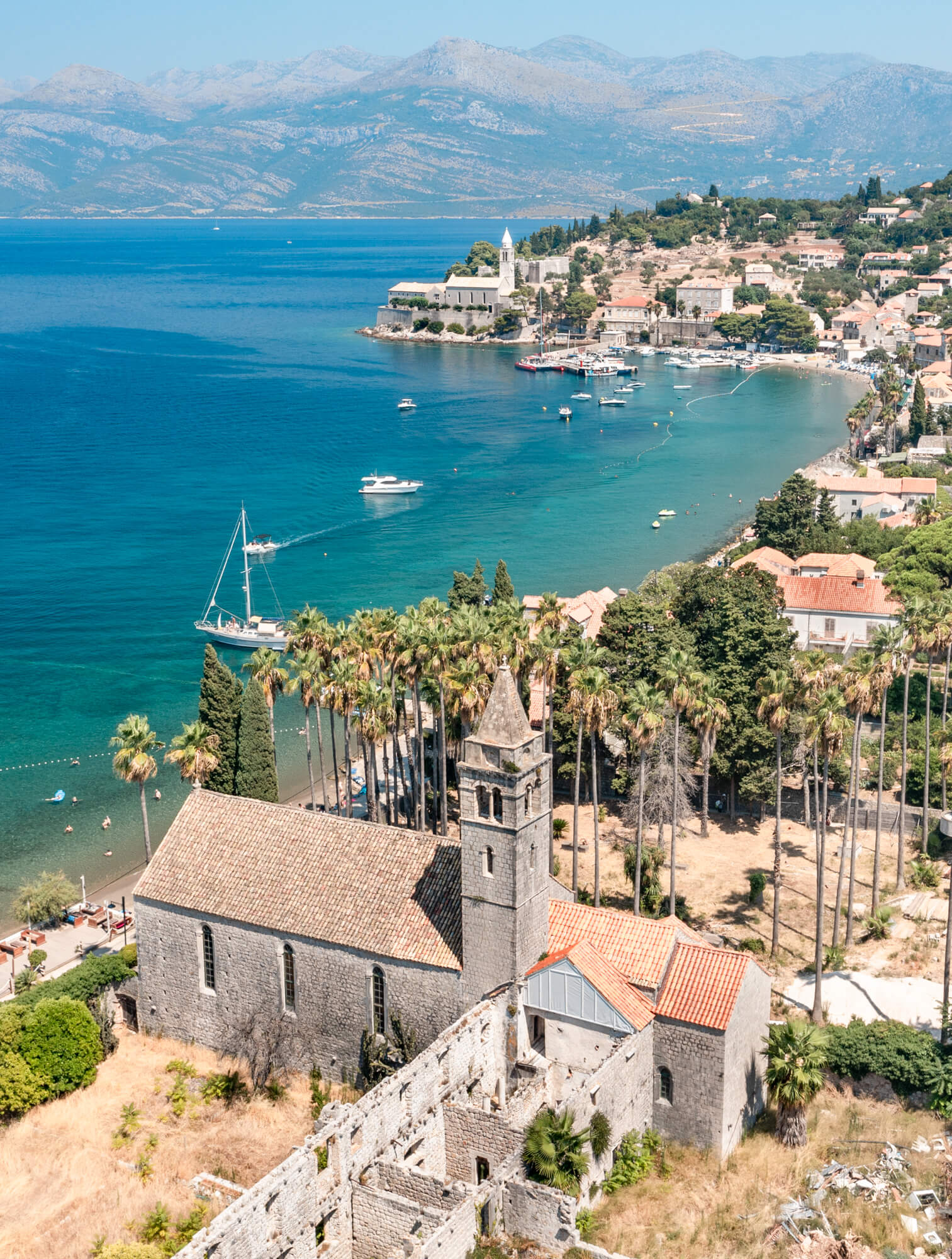
Lopud Island (Photo: Timotej Gošev)
Croatia will always stand out for its history, and its stories. But being someone who has lived most of his life on another continent, I am aware of the visual impact that Croatia has on other countries in the world. Especially in these times, many friends shared with me photos or videos that they found on Instagram, Facebook, Pinterest, TikTok, or Twitter, and they could not believe that such a place existed, and especially in Europe. When it comes to paradise islands and turquoise waters, many think of Hawaii, the Caribbean, or the islands of Melanesia. But Croatia has already positioned itself as an alternative Eden, and one that combines dream destinations and a calendar packed with cultural activities.
I find it impressive that a photo is able to motivate someone to book airfare and accommodation. I think this reinforces the idea that the world is there to be explored, and that Croatia is one of those must-see destinations in it. But for this to work as it has been working in recent years, it is necessary that all the tourism promotion forces in the country aim towards the same objective. There is the National Tourism Board, the local Tourism Boards, and why not, talented Croatian citizens who use their platforms and content to highlight their country in a showcase.
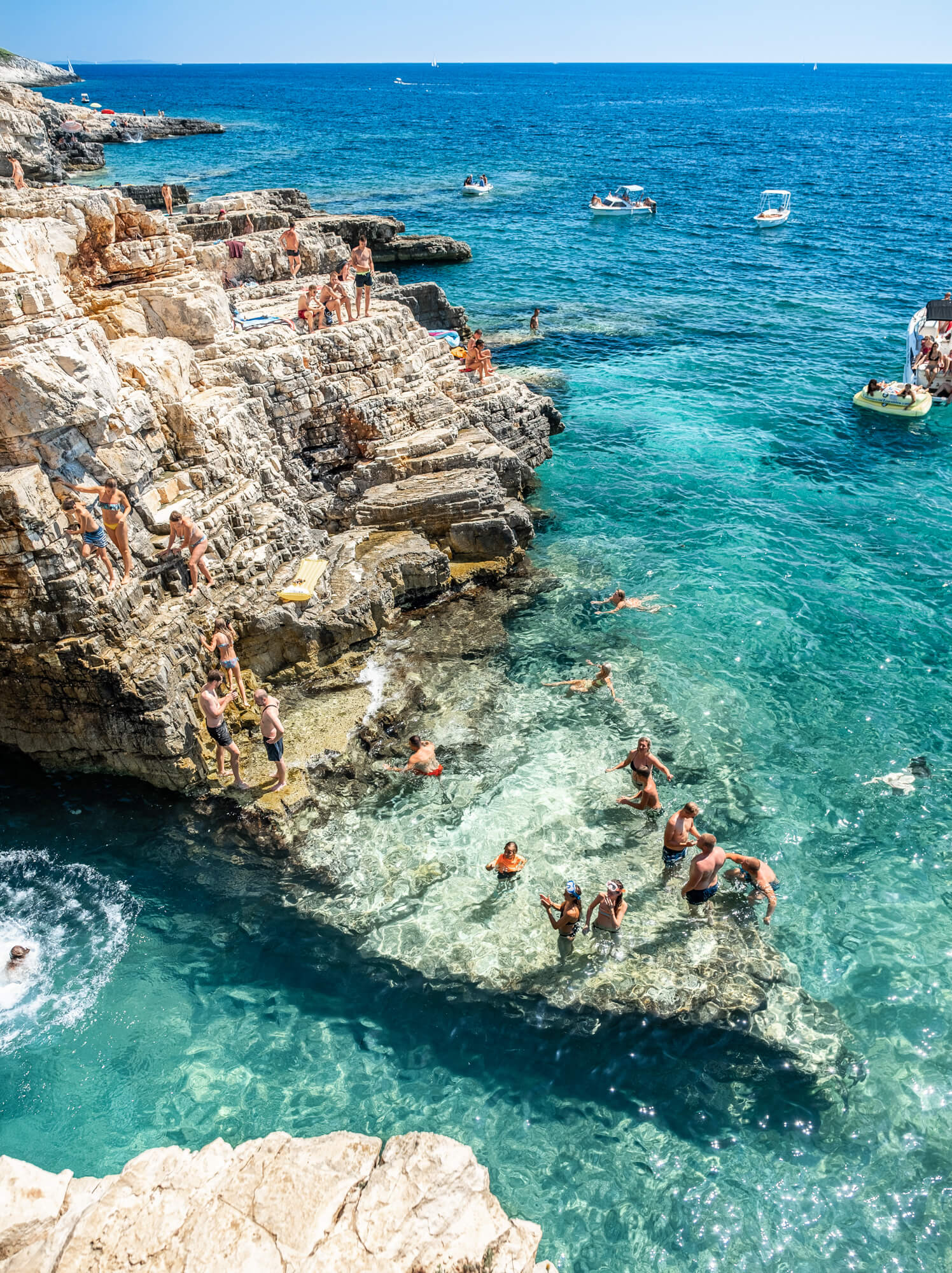
Kamenjak, Istria (Photo: Timotej Gošev)
One such person is precisely the famous Croatian photographer Timotej Gošev, who's approaching his mid-thirties, and currently living in Berkshire, England. He's the owner of the @timotej Instagram account which has become one of the largest social media accounts in the world by sharing travel photography and recommendations from only around Croatia. With almost 100 thousand followers on Instagram, his pictures often go viral and are reposted and shared by some of the biggest media groups such as Forbes, Conde Nast, as well as the biggest re-sharing travel accounts on Instagram such as Earthpix, Travel & Leisure, Wonderful Places & Beautiful Destinations. If you haven't seen his photography yet, be sure to check his Instagram first. He also has an impressive guide to his top 30 favorite beaches in Croatia, you can check it here.
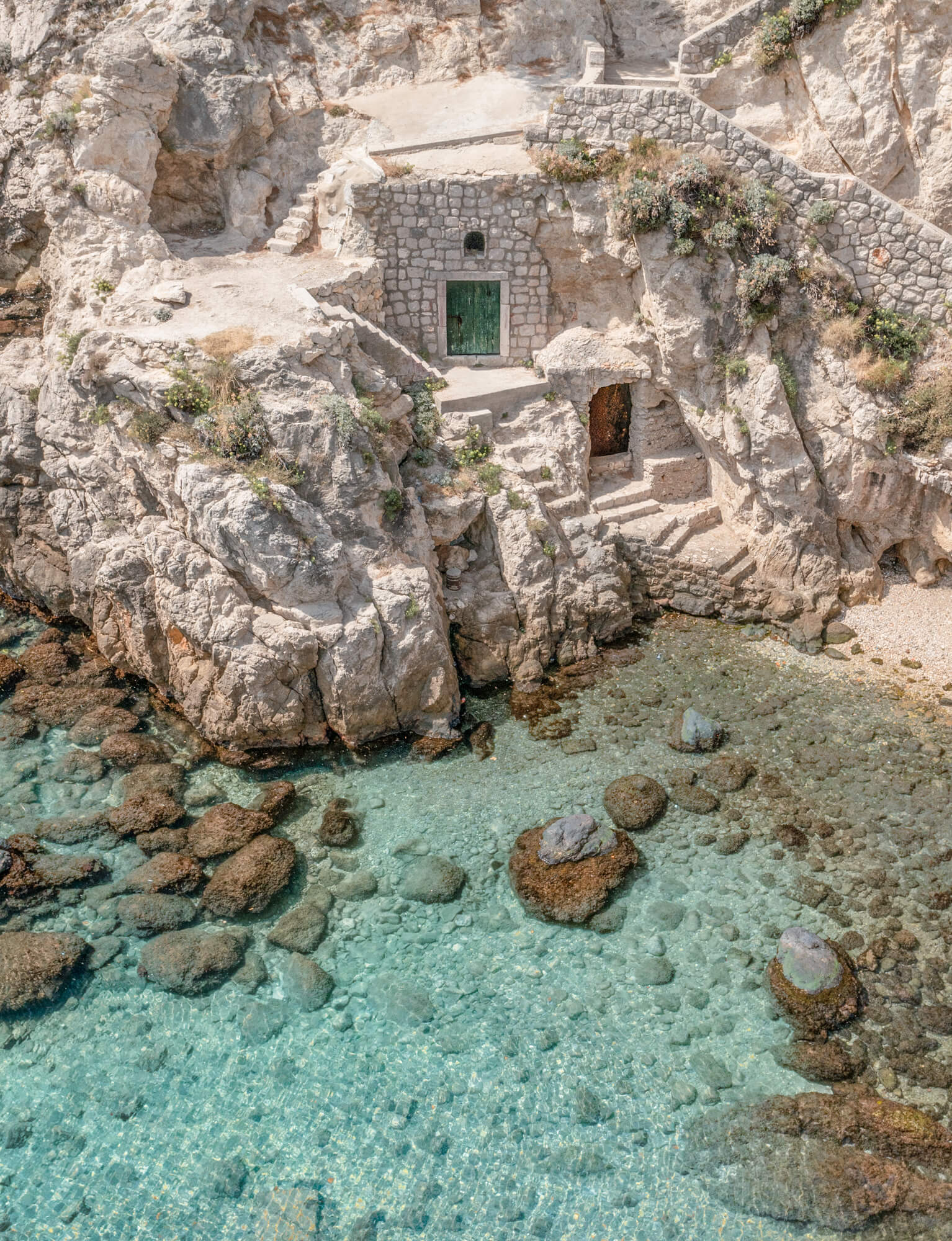
Dubrovnik (Photo: Timotej Gošev)
Timotej shares with Total Croatia News about his special connection to his country, his photography, tourism in Croatia, his future projects, and much more.
The vast majority of your followers and all of those who have come across your photographs on social media already know you for the quality of your work and your captivating images. But few know about your personal side and your history with Croatia. How does this connection with Croatia begin? Were you born and raised in Croatia?
It’s true. A lot of people see my photographs on Instagram, and just by looking at them can say this looks like one of Timotej’s photographs. However, very few people know me personally. Remember, I am a photographer sharing photos from around Croatia, through social media, to the world. I am not another influencer showcasing my life and hoping to influence you to be like me. My goal is to inspire people through my photography to visit and fall in love with Croatia.
It’s also very amusing to me, how so many people are surprised that I’m from Croatia. Even Croatians often assume I’m from somewhere else. I was introduced to Nina Badrić for example, and she knew of my photography but thought I was a Slovenian photographer. I think it’s purely because my name, Timotej (pronounced ‘Timo-tey’ in English), is not so common in Croatia. Think about it, most boys in Croatia are named after the first four books of the New Testament Bible. Ivan (John), Marko (Mark), Luka (Luke), Matej (Matthew). My mum wanted to be a little bit more original with her Biblical name choice, so she looked further down the list until she came to Timotej (Timothy). Simple and straightforward explanation.
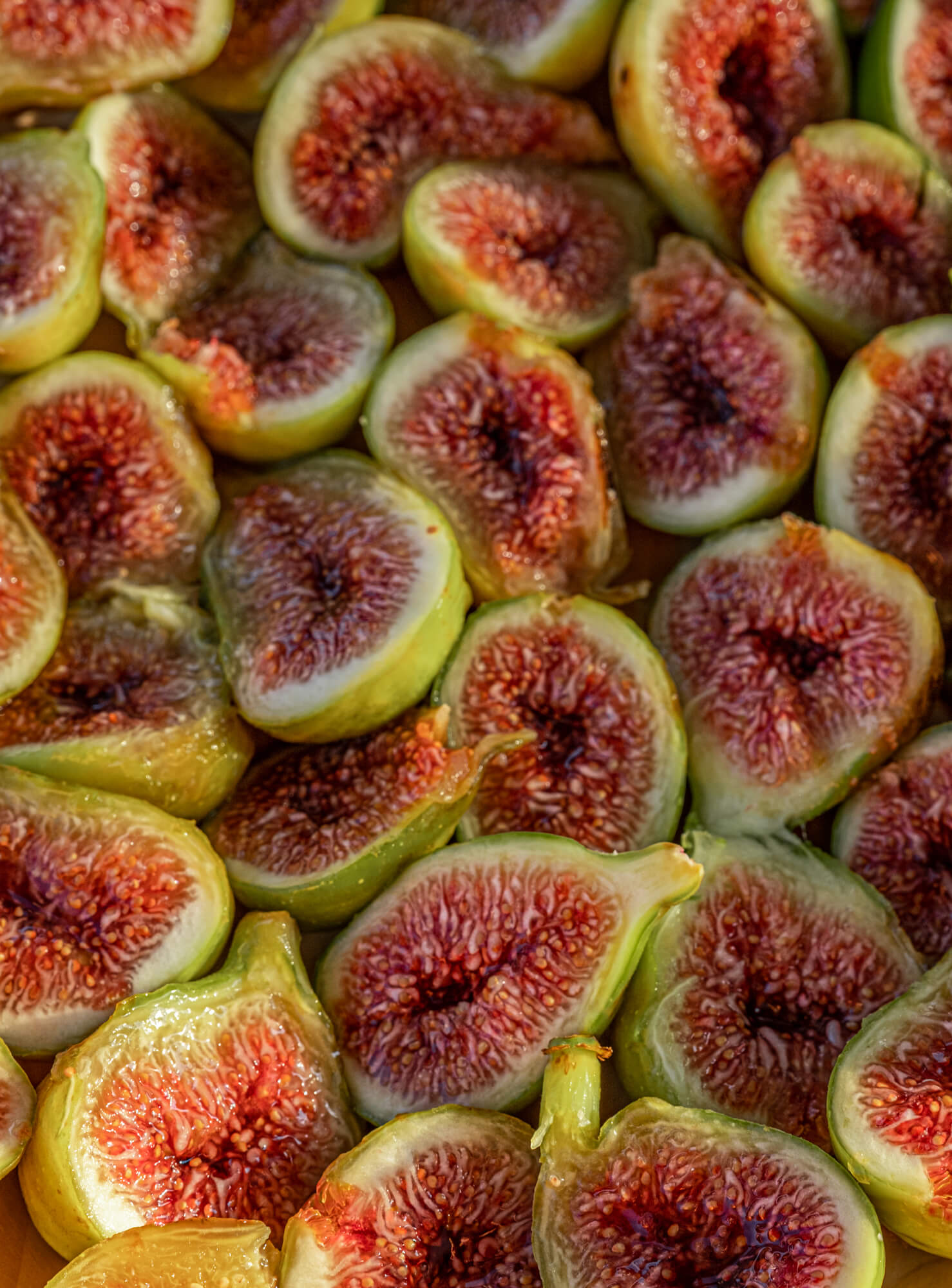
Croatian figs (Photo: Timotej Gošev)
My parents came to study in England after finishing their high school and army service in Varazdin, so I was born in the UK. But a few years later we moved back, so my younger brother was born in Varaždin. After a few years, my parents realized they could make a better life for our family back in England. So, once again, we moved back. Thankfully Croatia is just a drive and short flight away from England, so I was lucky enough to visit very often growing up. I can speak, read, and write Croatian too. I believe an Instagram account like mine, can only really belong to a Croatian, in love with his country.
Nowadays, when one associates the words ''travel photography'' and ''Croatia'', one of the first things that come to mind for a lot of people is ''Timotej''. How did you get started in photography and how has the learning process been so far? Is there another type of photography that you like equally?
I’ve been into photography for as long as I can remember. Cameras and lenses, all the gear, simply fascinates me. So does the quest to snap a perfect picture. As a child, I always wanted to press the camera’s shutter button and shoot everything. This wasn’t possible, as it was still the time of film cameras, and film roll was precious, so parents couldn’t let me waste it taking fifty pictures of nothing. So you can imagine my joy when digital cameras came into existence with memory cards.
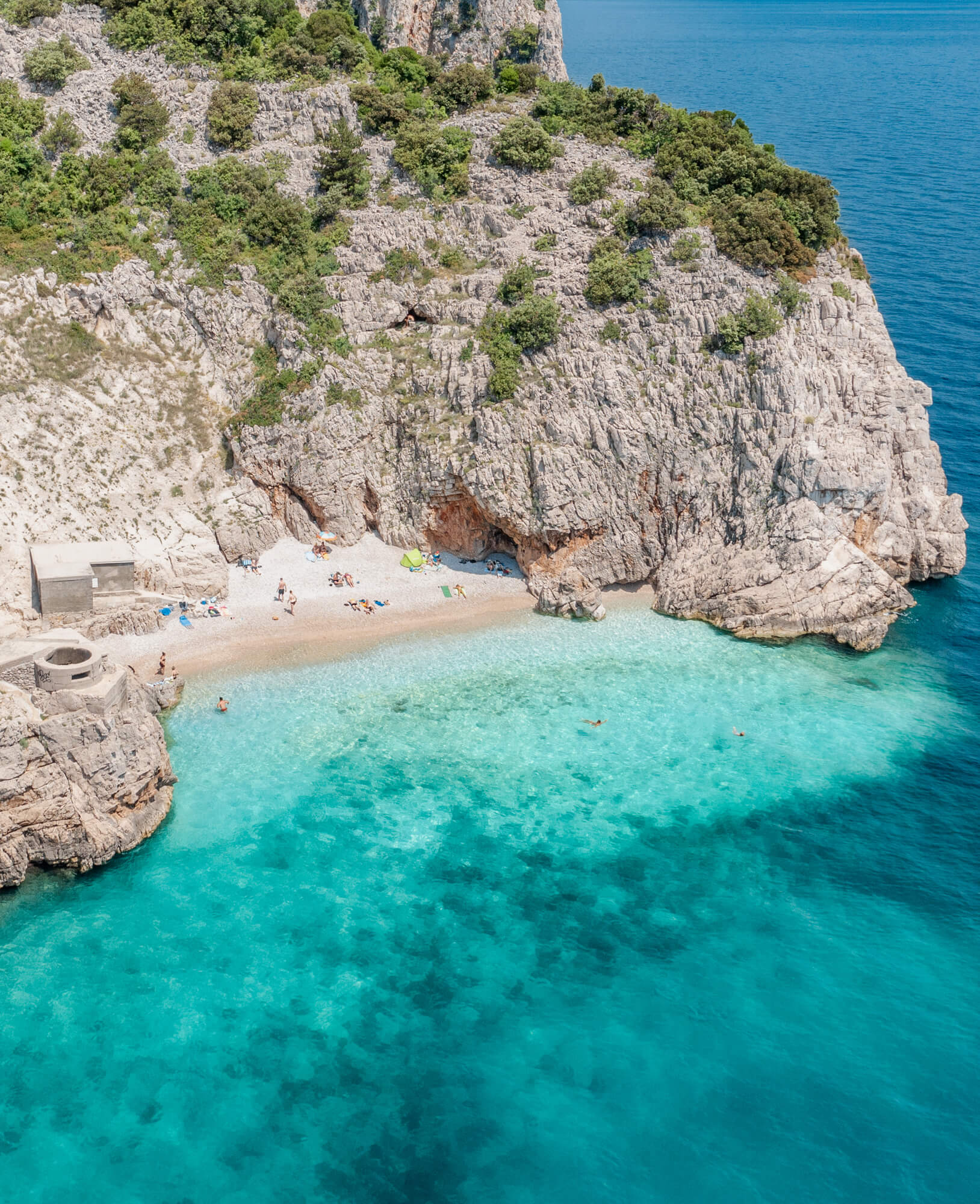
Brseč, Primorsko-Goranska (Photo: Timotej Gošev)
As far as learning goes, when you figure out how to work a camera/lens, the shooting settings, and how light affects the scene being shot, everything comes down to one’s eye for a good picture. Personally, for me, the learning these days mostly centers around training my eyes even more. If you take 50 shots, 1 can easily turn out perfect. But the goal is to be able to take 1 shot and make it perfect first time. Sometimes this means learning to be patient. Waiting. It can also mean making a bigger effort to find a unique vantage point. Doing research to find out what has already been shot where you are shooting.
I love beachscape photography as you all know, and architectural too. I also love to shoot macro shots. I really want to do more wildlife and food photography in the future.
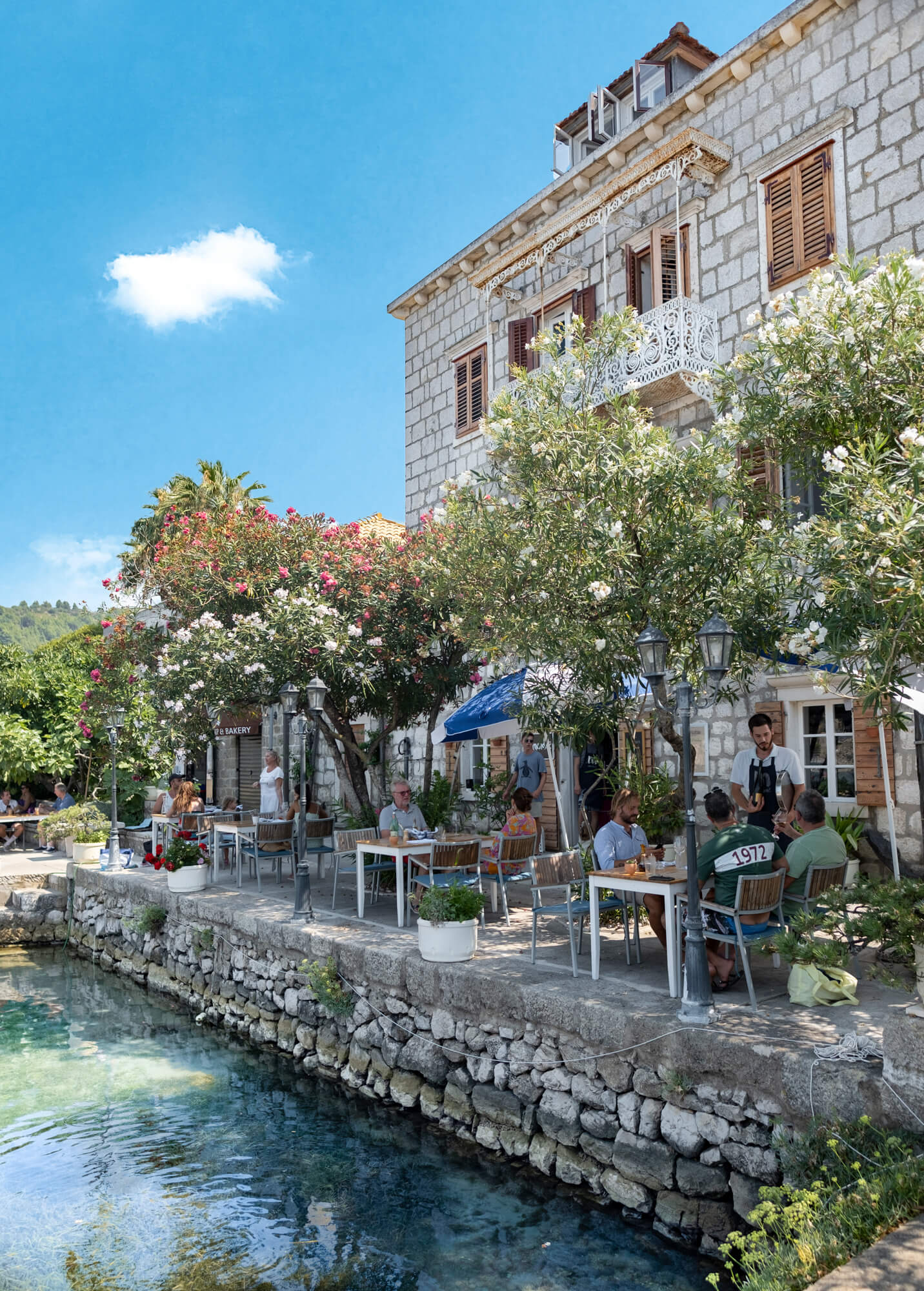
Restaurant Mandrač, Lopud Island (Photo: Timotej Gošev)
What inspires you to be a travel photographer and how has that changed in recent years?
I’m in love with the Croatian coast and the Adriatic Sea. Its beauty simply inspires me to capture it with my cameras. I am lucky and blessed to be able to call such a place, my country. I want to see and explore as many spots along the coast, and visit as many islands as my lifetime allows me too. Each place is its own world. People today are so obsessed with seeing as many countries as possible, but few have had the pleasure of truly knowing, exploring, and enjoying theirs. I love going back to a place I’ve already visited, to see how it’s changing, developing, and evolving. I am constantly inspired by the big and little changes happening everywhere. The way I see it is, that there is a lifetime of exploration for me and capturing moments with my camera. There is no getting bored.
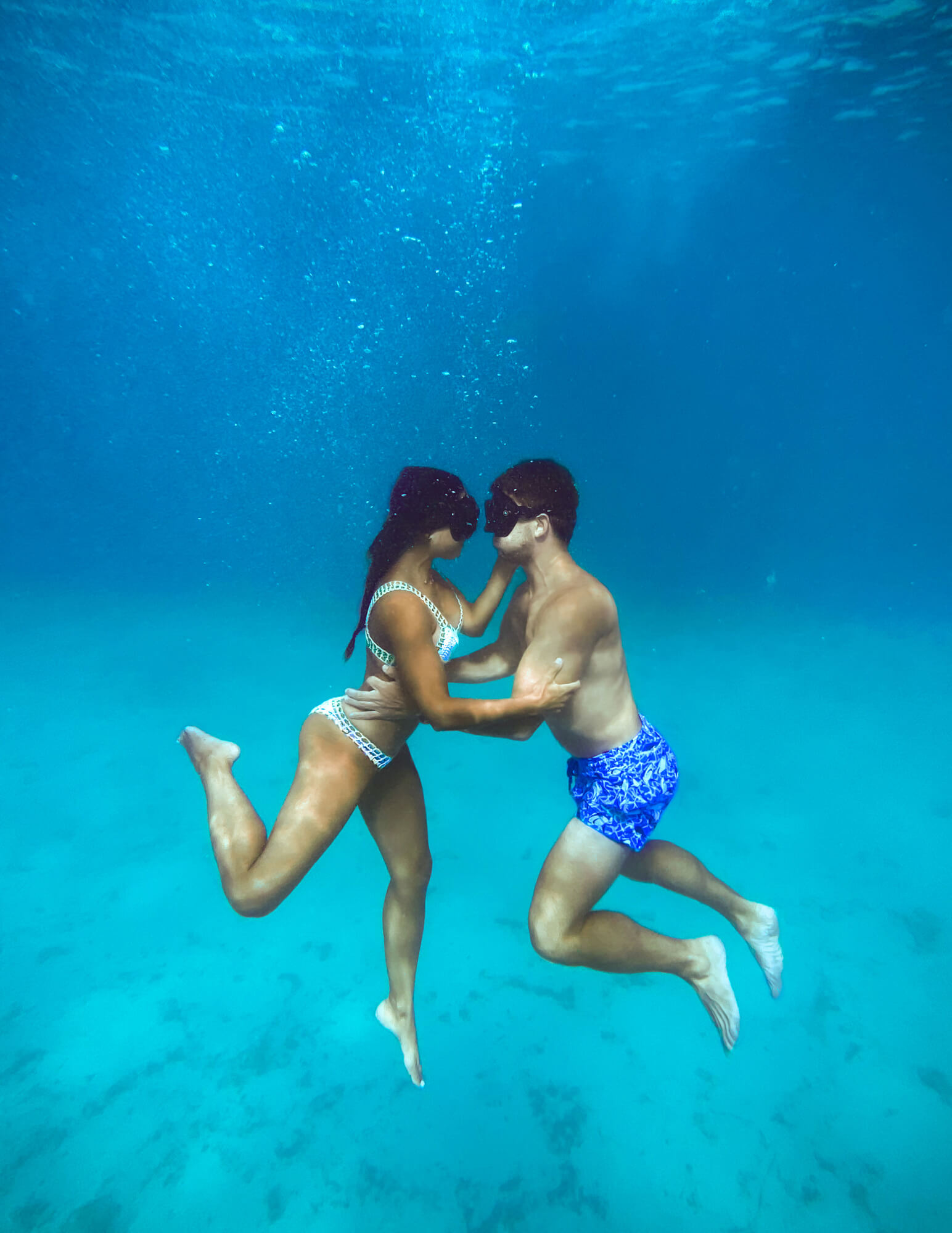
How do you manage to balance your time between the UK and Croatia? Has Brexit affected in any way the way you travel between the two countries?
I like to be in Croatia during the summer, so I can enjoy the sea and beaches. It’s where I experience the most joy. Since I got my driving license, I have been planning my life in a way so I could spend the maximum possible time in Croatia every summer. To my surprise, neither Brexit nor Covid19 has affected my travels to Croatia. I have dual nationality. Croatian and British passports and therefore was legally allowed to travel to go to either home. With negative PCR test results, I drove England to Croatia three times during the pandemic. When you have a registered photography business in the UK, going to Croatia to shoot photos is a legitimate and valid reason to travel for work too.
How would you describe the personal style behind your photography? And how about your visual style?
I want people to look at my photographs, and simply desire to be right there in the place their eyes are seeing. To imagine themselves living the moment being shown. My photos need to mentally seduce and show the essence of an Adriatic summer experience in Croatia. People think my visual style is really unique, but it’s a classic beachscape visual style used in travel magazines and by some of the world’s most known beachscape photographers for decades.
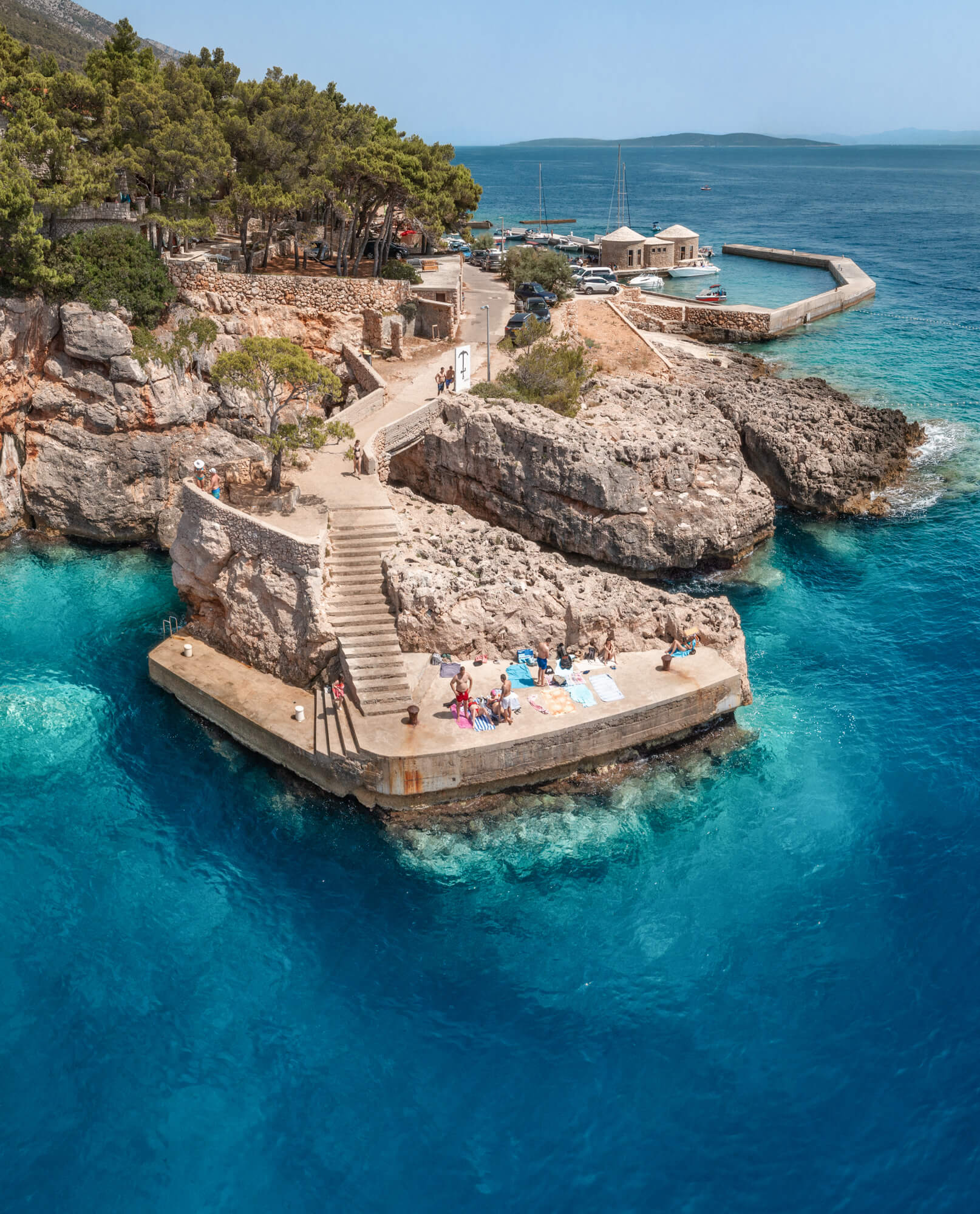
Sveta Nedjelja beach, Hvar (Photo: Timotej Gošev)
It is a beautiful summer day in Croatia, how does Timotej spend it from start to finish?
I like to wake up early. No need for coffee. I really believe in seizing the daytime. I want to be the first on the beach. Put my towel in the best spot, and go for a morning swim to truly wake up. Love soaking in the early morning sun too. Around 9 am, it’s time for a light breakfast, and then back to the beach where I’ll stay until lunchtime being as active as possible. I prefer to stay in apartments, so for lunch, it’s usually time to cook something, rather than eat out. After lunch, it’s back to the sea/beach until sunset. The afternoon is usually about exploration. Then shower, dress up a bit and go to town for dinner and some ice cream. I always end up chilling on apartment terraces late into the night, always in good company getting into deep conversations.
It has happened to me on several occasions that I have decided to put my camera aside so as not to miss the experience. How do you manage to consistently create content and live in the moment at the same time? Do you have any advice for other travel photographers?
It’s actually very simple for me. When I go to a place in Croatia, I am not going there to take a picture. I am going there to enjoy the experience and moment of being in a place which brings me total joy. I live the moments fully with my camera at home, or in my backpack. After I enjoyed the place, explored it, I come back with/take out a camera. Also, I don’t live from making social media content and I don’t have any pressure to create content. My advice to travel photographers is that when you decide to shoot a place, make a decision to spend at least 1 week there. Don’t follow the content creator crowd, and a lot of Croatian photographers, are doing this, in that they go to a spot for a few hours with the purpose of taking a photo and then off to the next location.
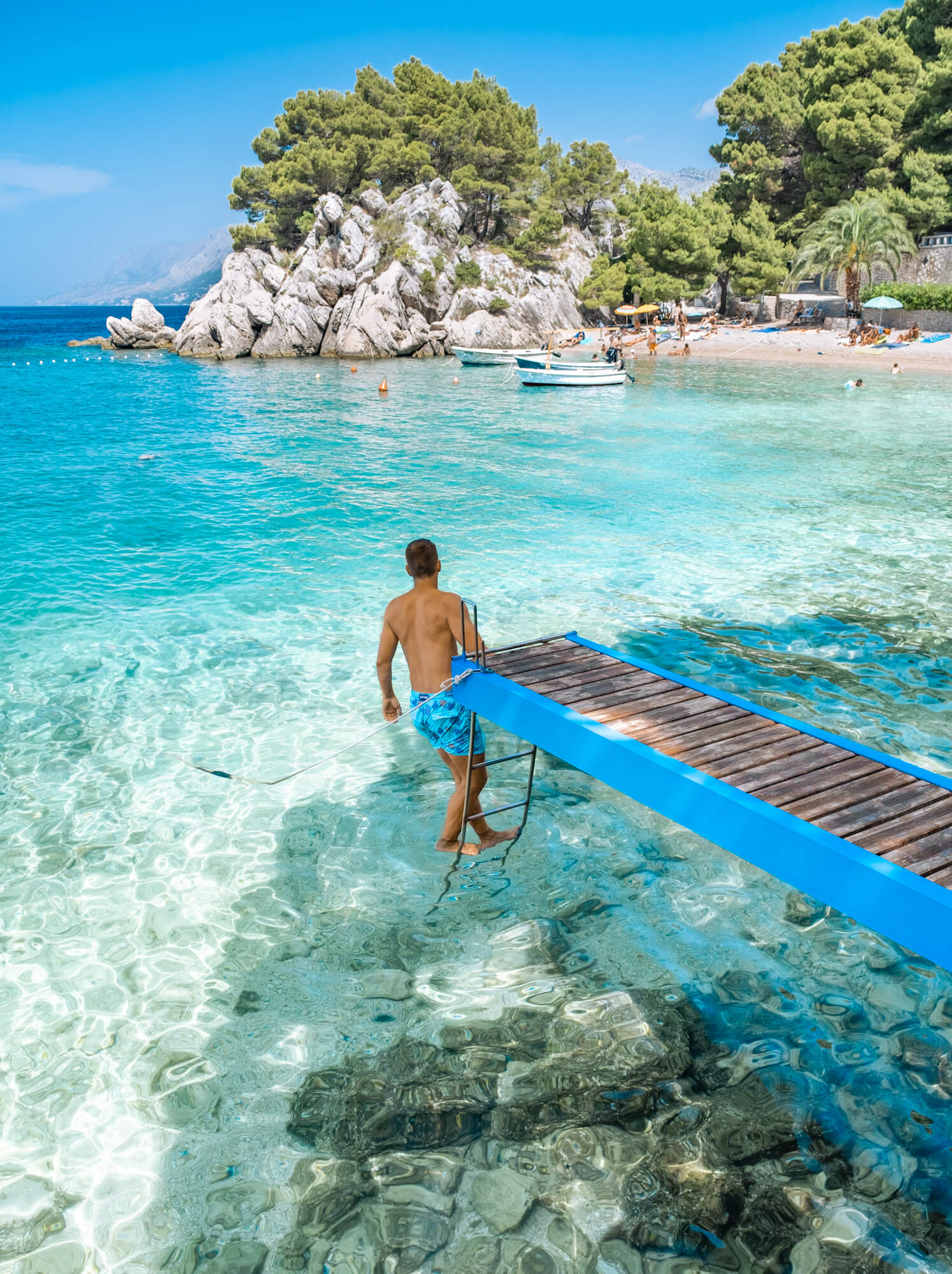
Brela, Dalmatia (Photo: Timotej Gošev)
A photographer was telling me how they photographed every nice spot on Korcula Island in 1 day. Don’t make this same mistake. The world’s most famous beachscape photographers, when shooting a particular area, commit to spending a whole summer season there, chasing the billion-dollar shot, as we say. I can’t commit to a whole summer in one spot yet either, but everyone can do 3-7 days. 1 to enjoy without smartphones and cameras at least.
It could be said that you lean more towards photography of landscapes and places, but would you like to also venture into a type of travel photography where you can also highlight the Croatian people, their traditions, and their customs?
My focus is the Ljeto (Summer) in Croatia. The goal is to photograph and show the summertime experience. Naturally, there is a lot of landscape shots. But if you have been following me for a while you also see the entire summer experience. If I go into town at night and see a cultural dance, or traditional outfits, if I like what I see, I will photograph it. But right now, the priority is to show beaches and nature, accommodation, and things one can experience when visiting Croatia in the summer. I am showing what my audience wants to see.
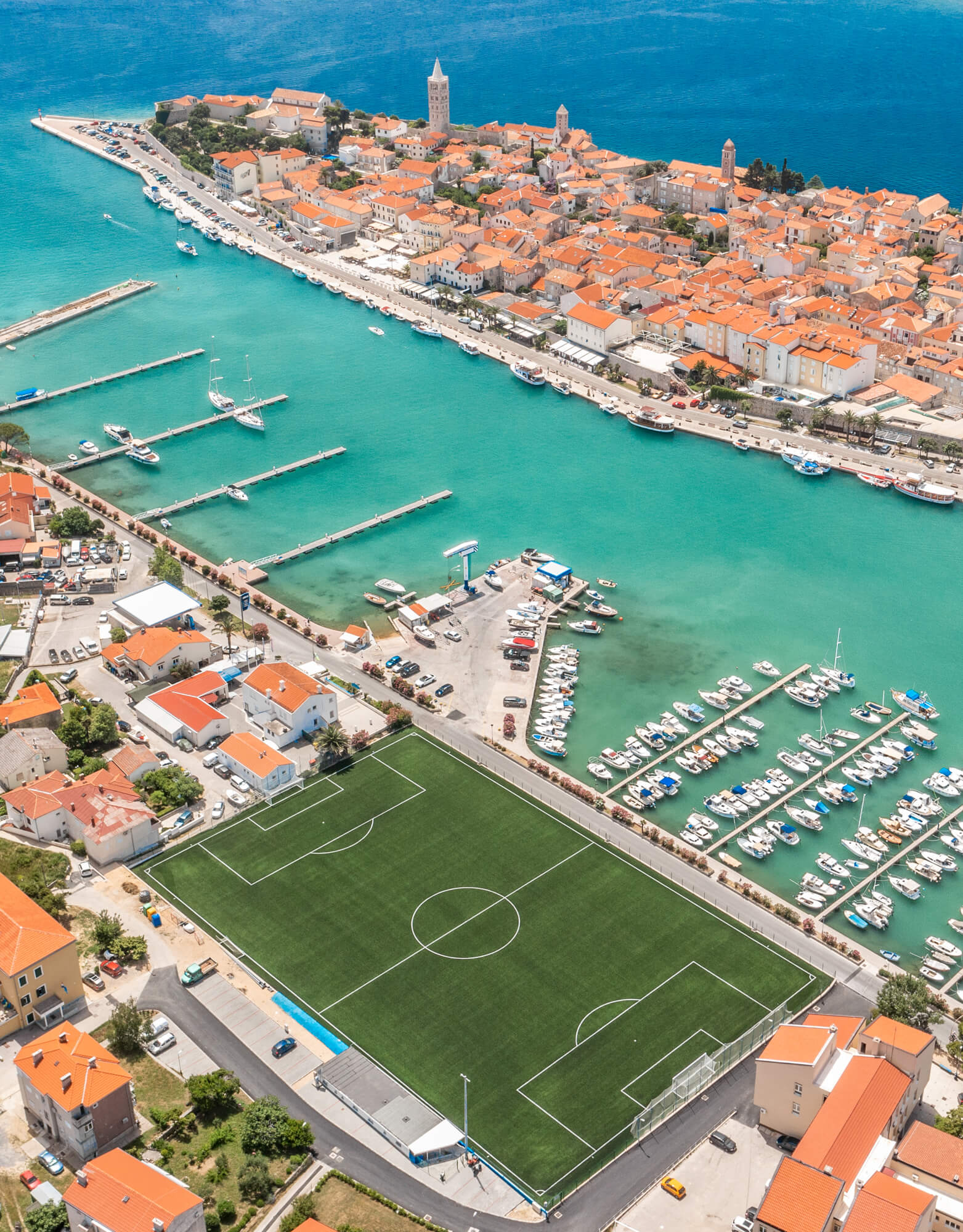
Town of Rab (Photo: Timotej Gošev)
However, if Drago Sopta retires, I would gladly like to venture off and take over as the photographer of the Croatian National Football team and take pictures of the guys playing football. I believe in myself as a photographer, and my ability to shoot in a variety of styles.
It is said that there is an excessive amount of drone images to visually promote Croatia and that they do not accurately reflect the possible experience of a tourist (for example Izvor Cetina or the Croatian islands from above). But you manage to combine both images with a drone as well as those from a personal point of view. How can both promote tourism in Croatia?
Look, Zlatni Rat Beach shot with a drone, from above, looks like one of the most beautiful spots in this world. It’s unreal. Then you come there, stand on the beach, and you can’t really see it from the vantage point the drone did. So you now have two options. The first is to get upset, choose to be negative, and leave disappointed, as many do. Or you can think about it, and say to yourself, I’m standing on this magical beach full of shape-shifting pebbles, surrounded by perfect water, and enjoy the beach all day. Every destination spot in the world that looks good from above is excessively photographed with drones. Those saying it doesn’t accurately reflect the tourist experience are a very small minority, and they are there for the wrong reason in my opinion. I believe you need both to give the true picture to someone. Let them know what it looks like from above and below. Balance is key. I like to show how it looks from ground level and from the sky.
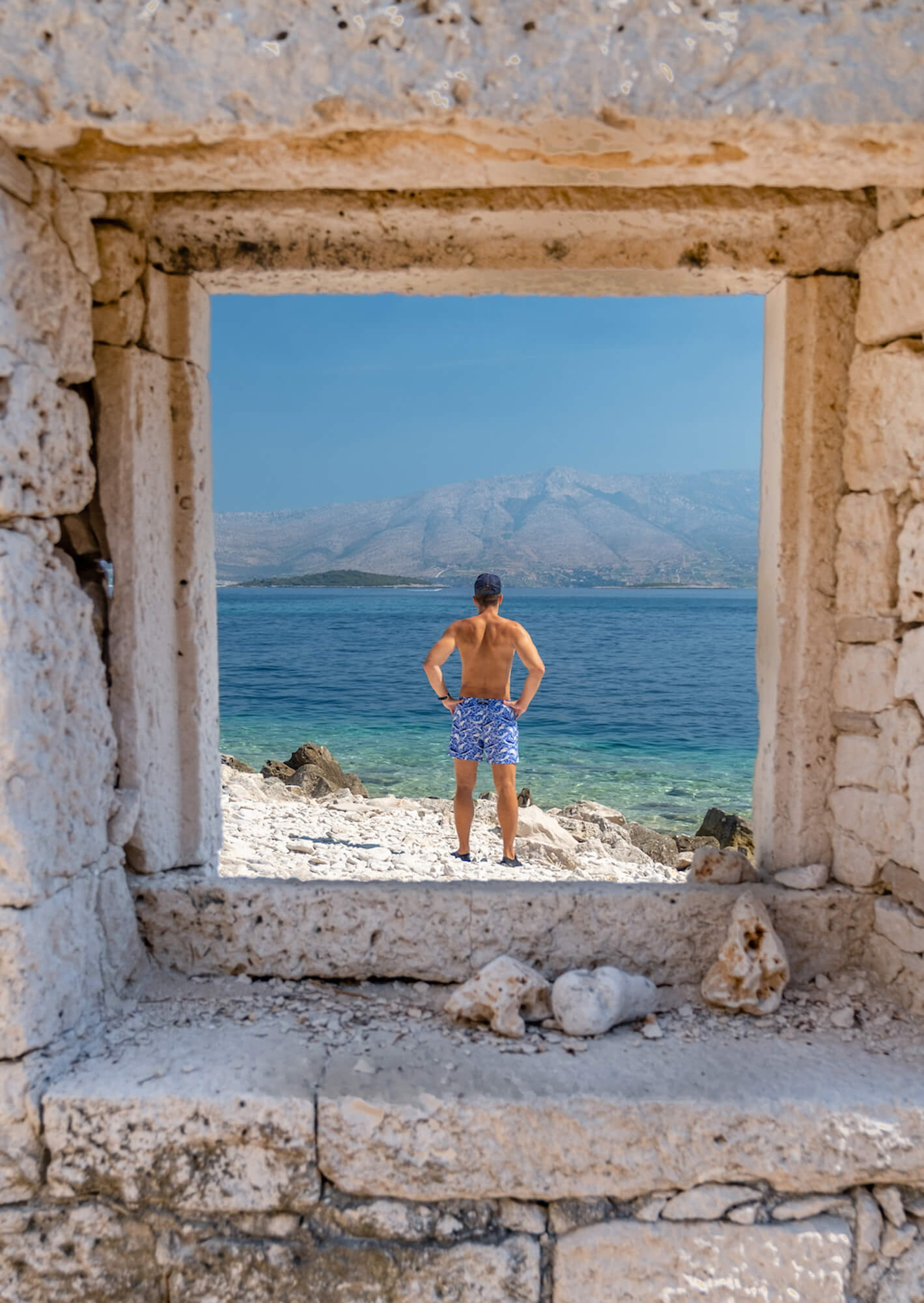
Otok Vrnik (Photo: Timotej Gošev)
Many content creators avoid bringing discussion topics to their feed to avoid losing followers or getting into disputes with them. But in addition to visually promoting Croatia, you also take the time to raise awareness about caring for the environment, such as animal rights and the situation about smoking in Croatia. Is it necessary for content creators to be ambivalent in that regard? What responsibilities should someone with so many followers and a lot of reach assume?
I always speak my mind. From day one on Instagram. I have my opinions, and my account is a space where I can share them as well as my photography. I don’t expect everyone to agree with them and that’s okay. Does Croatia have a smoking problem? Yes. Have tourists noticed it? Yes. Is it destroying our beaches? Yes. A lot of what I highlight are facts and truth. Common sense. It’s already been said by others, and it’s very much connected to keeping Croatia’s land beautiful and not destroying it. I don’t live from Instagram, so if I lost all my followers tomorrow, it does not affect me in any way. As for disputes, occasionally some arise, but surprisingly not a lot. I think the things which I’m highlighting are things the overwhelming majority of my followers agree with me on. We all want to keep Croatia clean and beautiful for generation after generation.

One Table Restaurant, Hvar Island (Photo: Timotej Gošev)
Regarding the promotion of tourism in Croatia, what aspects and efforts made by the national and local tourist boards in the last two years can you highlight?
I don’t see anything the National Tourist Board does, and as the majority of the tourist sector in Croatia, see them as irrelevant, and a waste of taxpayers’ money. The Local Tourist Boards, on the other hand, are great. I’ve had the chance to work with a lot of them now. It’s hard to keep everyone happy, but they are doing their best. I can say and see they are finally embracing social media, and valuing its importance more than ever. Making sure they have a strong social media presence, as well as using people like me, and other Croatian photographers to showcase their tourist regions to the world.
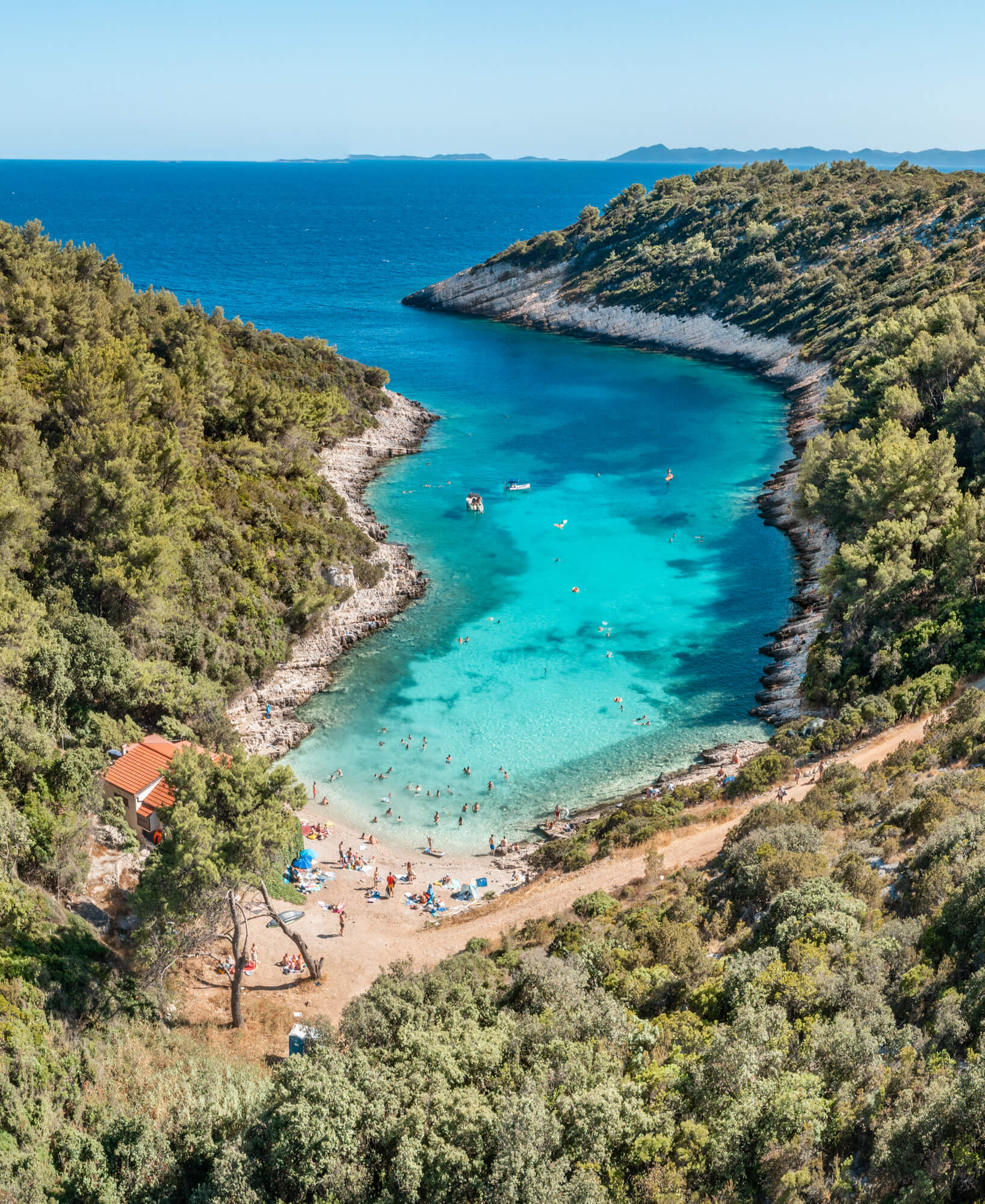
Žitna Beach, Korčula Island (Photo: Timotej Gošev)
In what aspects do you think the promotion of tourism in Croatia should improve? Is there something you can criticize?
The biggest issue I noticed is the relationship between the local tourist boards, and the locals working in the tourist sector. It seems everyone is against the tourist boards and everything they do, with only a small minority pleased. I’ve been to places, and I like to talk to locals, and the moment they find out I’m involved with the local tourist board, they don’t want anything to do with me! Why? Well for starters Local Tourist boards should have nothing to do with political elections and political parties. The tourist boards should exist to serve the tourist, those offering tourist services, and they should be neutral. Also too many tourist board employees, naturally have friends working in the tourist sector and thus drive tourists to only use their services. I think you can guess what kind of issues that can create. The tourist boards should be the pride of the local tourism sector. A fair helping hand, letting the tourists know all their possibilities. Show them all the options on offer, and let them choose which to go with. I also really think it’s time for an official tourist app, where everyone in the tourist sector can list their tourist offers for free. Create it with taxpayer money. Tourists can use the app to find out and search for everything. Beach information. Boat rentals. Taxi numbers. Available accommodation. In 2021, one shouldn’t have to go to a tourist office for information anymore.

Badija Island (Photo: Timotej Gošev)
In what ways can photographic content contribute to effective tourism promotion in Croatia? How important is it?
People travel to different places in the world for different reasons. Everyone is looking for something specific. An image they have seen either in a photo or video usually serves as the primary mental motivation for doing so. They want to see that image with their own eyes. I have always argued that people come to Croatia first and foremost for the natural beauty of the sea and beaches. The old towns. Natural parks. I loved our old tourist slogan, the Mediterranean as it once was. So, before booking a flight or hotel, people want to know what the particular area they are potentially going to visit has on offer. I have been the first Croatian photographer to share certain places in Croatia on Instagram for the very first time, and the response was, we had no idea this place existed.
I’ll give you a personal example. I grew up spending summers around Zadar. Since I was a kid. Only recently as an adult, I discovered one of the most beautiful spots in Croatia. Vrsi, right by Zadar. I never saw this spot advertised anywhere. So I never went there. Some beaches like Zlatni Rat were advertised everywhere, so normally, I went there, and it was crazy crowded. By showing a little bit of every place, you are now giving people the choice to go to so many places.
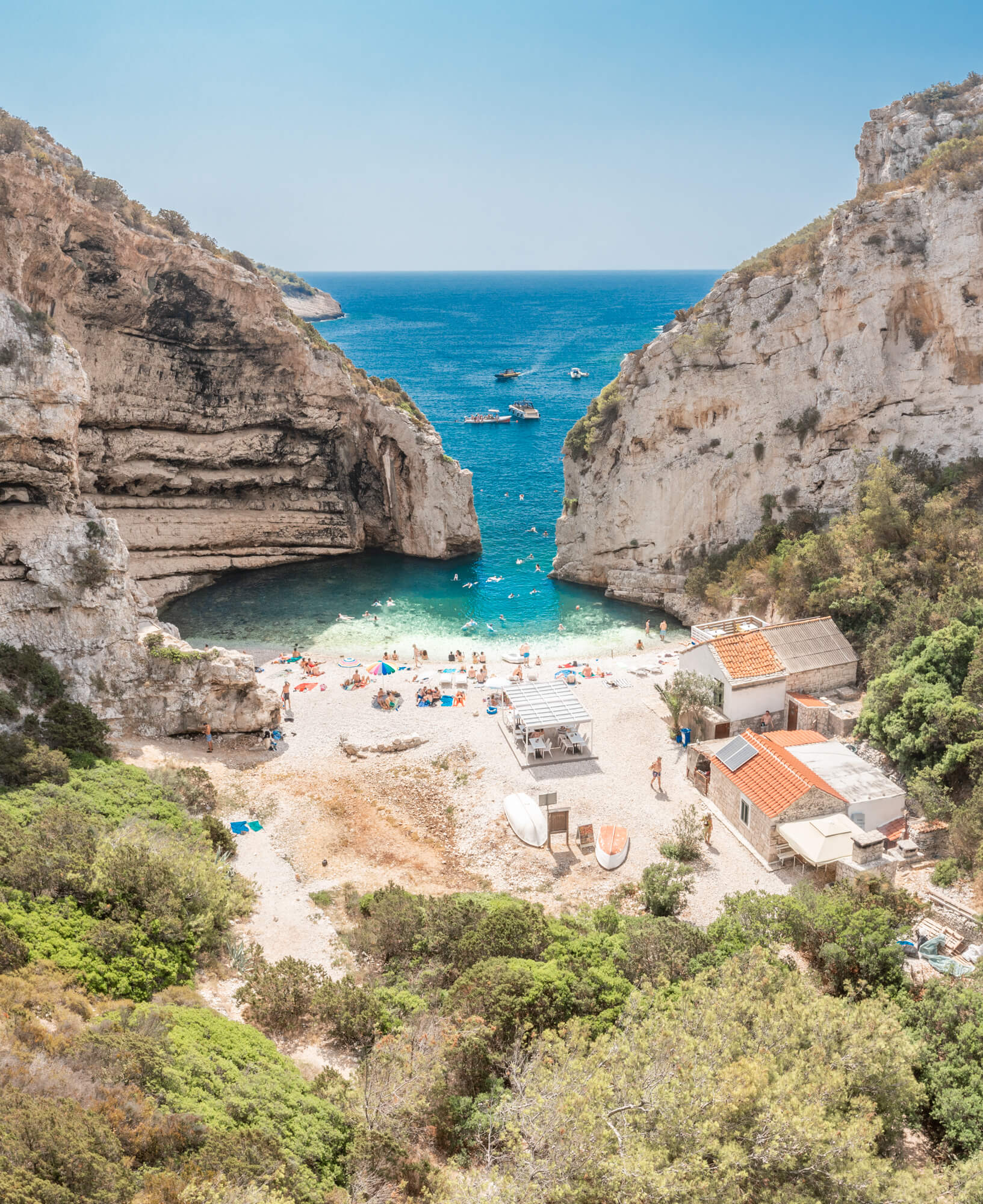
Stiniva Cove, Vis Island (Photo: Timotej Gošev)
If you could describe Croatia to your followers as an ideal travel destination, based on five unique aspects, which ones would you choose?
1. Raw natural beauty everywhere. 2. The crystal clear blue water. 3. Safety. We are an extremely safe country for tourists throughout the day and night. One of the lowest crime rates in the world I believe. 4. Quality of food and drink. 5. There’s something for everyone.
Is there anything in particular in Croatia that catches your attention and would you like to investigate further? I have seen that at some point you inquired about the history of abandoned stone houses on the Croatian coast and islands. It is really a fascinating subject.
The abandoned stone houses are a sad story. I really hope the property ownership laws change soon. They are killing Croatia. A lot of people say it’s impossible. But I believe there’s an easy fix to it if you apply common sense. Pass a law, that every property in Croatia within 2-3 years has to have one owner owning 100% of it. No more multiple owners, owning small percentages. If some owners can’t agree on a deal between themselves, it goes to auction among all the owners, and the highest bidder gets the property. Why hasn’t this happened? I hear lawyers in Zagreb make a killing on these property disputes. I also think Croatia has a serious waste management problem. Especially on the islands. I’ve heard shocking accounts from those who live on the islands about what really happens with the waste tourism generates. I think the situation is worse than many believe. And if that’s really true, we need to do something about it. I truly believe the world sees Croatia as a clean country where natural beauty can be seen in abundance which is its biggest selling point. The land is really ‘Lijepa Naša’ and it needs to stay that way.
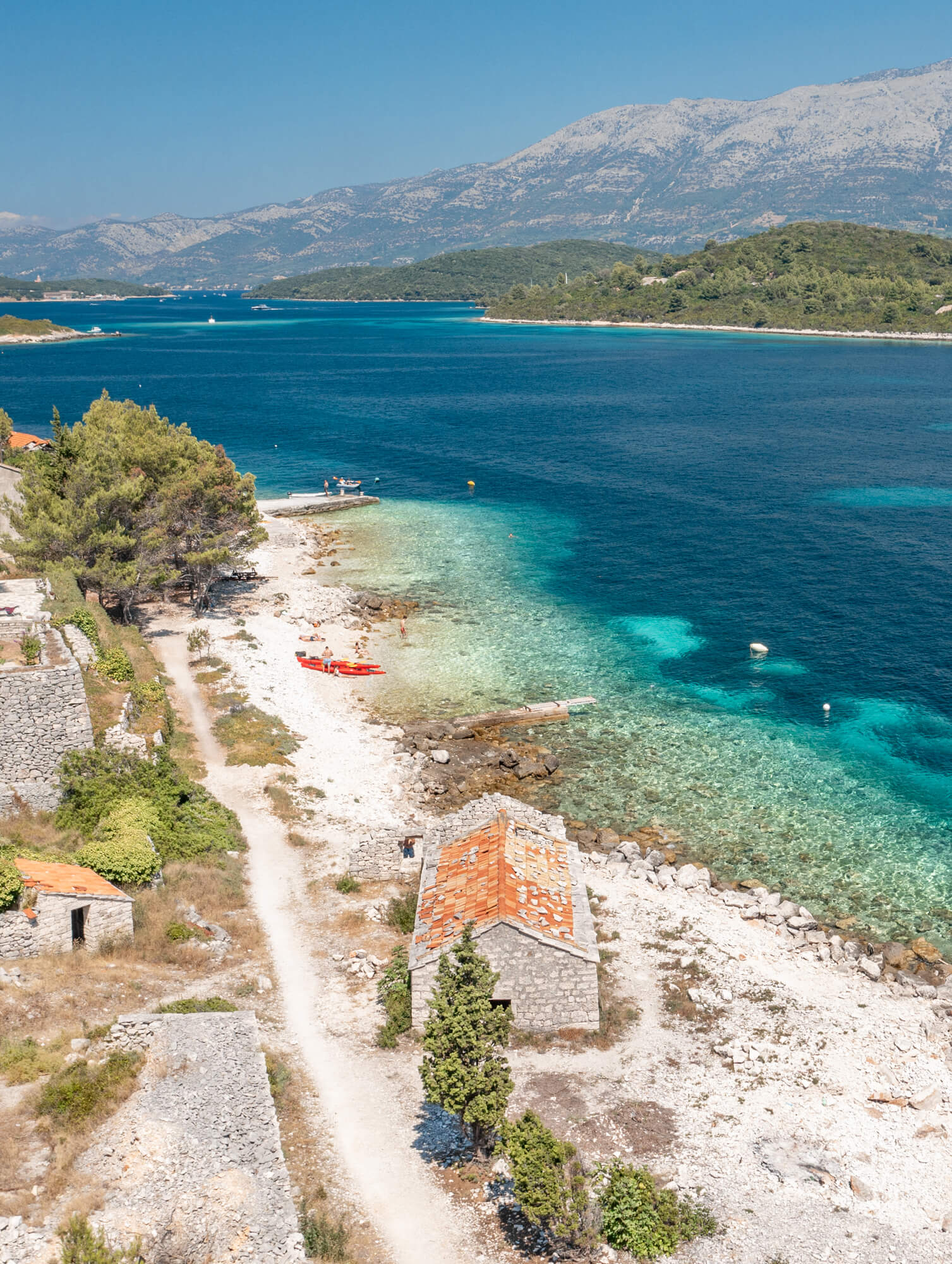
Otok Vrnik (Photo: Timotej Gošev)
Connected with this issue are the party sailing trips such as The Yacht Week. Everywhere they go, they leave so much rubbish behind it's unreal. In the sea. I’ve seen it. Again and again. All the locals I meet in the entire tourism sector as well as those simply living in the spots The Yacht Week comes by, wants these party sailing holidays banned. It’s beyond me how this hasn’t happened yet. Whoever is giving them the green light to continue summer after summer needs to be put in the spotlight.
Besides being a travel photographer, do you also consider yourself a travel journalist? Many content creators upload their photos or videos and that's it, but you like to include reflections, chronicles, and recommendations alongside your images. Is it something that you are interested in developing further in the future?
I grew up reading travel magazines like Conde Nast, and I currently collect travel-themed coffee table books full of pictures with text. There’s always a story behind what you see in a photograph and something to learn. I do consider myself an excellent writer in the English language. People have noticed this, and this past year, a few travel magazines and a national airline, asked me to write for them about Croatia, as well as showcase my photography to their readers. I hope more people will ask in the near future. It’s something I love doing.
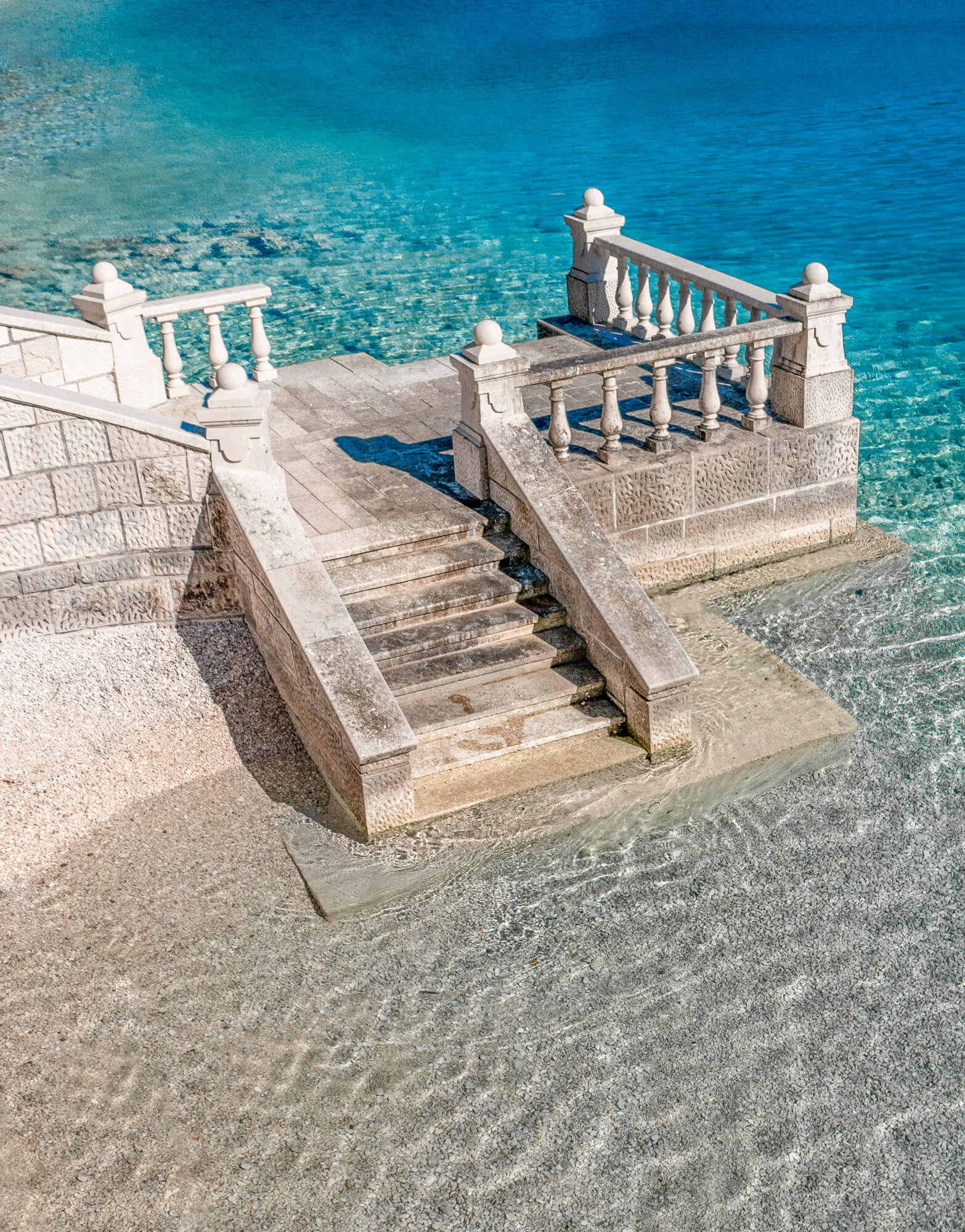
Čikat Bay, Lošinj Island (Photo: Timotej Gošev)
What does your Instagram profile look like on a summer day in Croatia? How do you usually interact with your followers or people who need help or recommendations?
During the summer the plan is to share 2-3 posts a day. The pictures being posted are usually what I photographed 1-2 days prior. Also, because we are in the summer season, many of my followers are currently in Croatia, or about to visit. This results in a crazy amount of questions. I used to answer every question without fail in previous years, but with an increasing number of followers, it’s impossible sadly. Remember I’m not getting paid to do this. It takes a lot of time. This summer I was receiving roughly 300-500 messages a day. A lot of people also don’t read the caption in my posts and then send messages, for example, asking what’s the name of the beach in the picture I just posted, without making an effort to read the caption where this has already been stated. This is very frustrating. However the questions generally are usually based on recent posts, so I try to answer a lot of them in one of the next posts or stories.
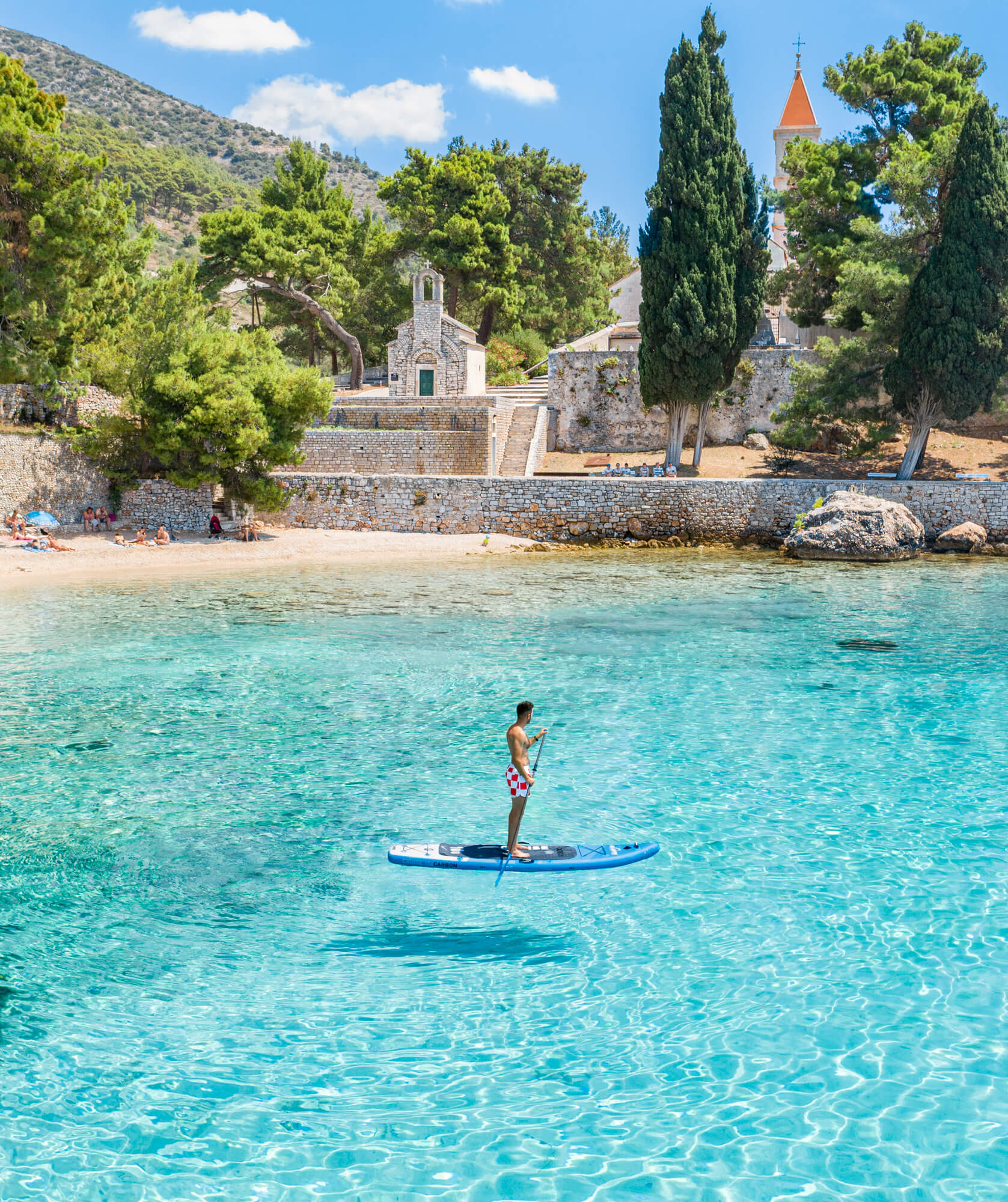
Bol, Brač Island (Photo: Timotej Gošev)
Besides photography, what other things do you spend your time on? Do you have any other interests or hobbies that are just as exciting?
Out of the summer season, I live in England, so when I’m not working, I really love to play sports. I play football, basketball, volleyball every week, competitively. Then there’s gym and lap swimming. I’ve always been into cooking too. So, always trying to master certain dishes and learn new ones. In the summertime, besides photography, it’s very much every activity connected to the water. I’m a big water sports lover. I love diving. I’m a very active individual. I love the company of friends too. I’m a very social extrovert that likes to laugh a lot.
What next projects do you have planned? What are the next steps in Timotej's life and career?
Oh, I have a lot of ideas. Some are already slowly turning into reality. I would love to see more art stores around the world selling my prints of beautiful beachscapes from around Croatia. At the moment it’s just a few in England. As well as being a good photographer, I also believe in my ability to capture video, so expect to see some epic short films soon. I’m also already working on my very own coffee table book taking you on a journey around Croatia’s coast and islands. I’m really excited for this. I have the photographs and text, and just need to find the right publisher to make the dream come true. Lastly, due to demand, I think I will slowly get into trip planning. So many people want me to plan their visit to Croatia. I’m honoured.
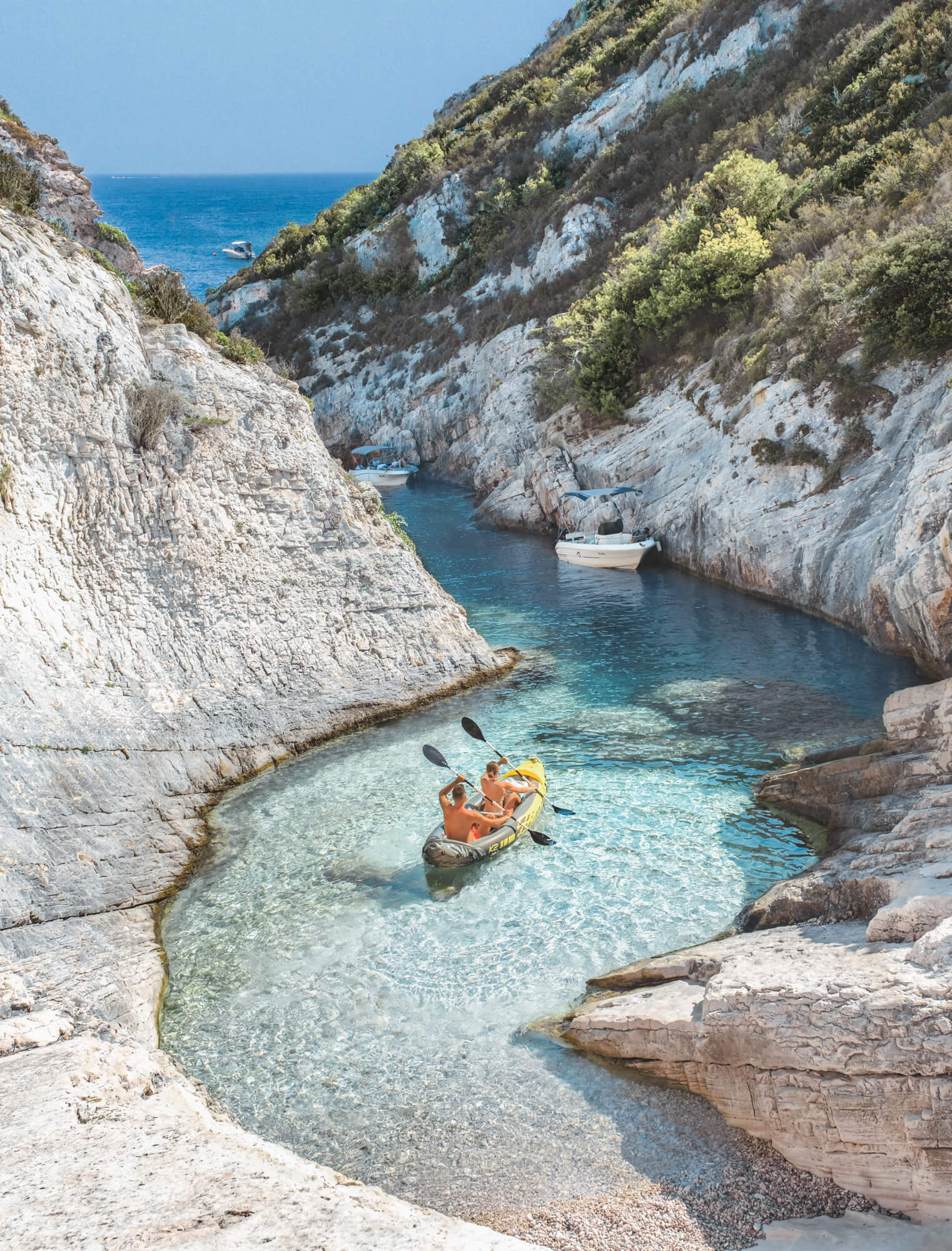
Pritišćina beach, Vis Island (Photo: Timotej Gošev)
Your talent as a photographer, and your Instagram account, have resulted in many collaborations over the last few years. What’s your favourite one so far? Is there one you would really love to do in the future?
It’s hard to pick a favourite. I love them all. This past summer I did a collaboration with Valamar Hotels. Had the chance to visit all their hotels across Croatia over a period of 6 weeks. It was amazing. Shooting the hotels, rooms, beaches in front of the hotels. The facilities. Loved every second. The sailing collaborations are always unforgettable too. What would I love to do? Shoot Villa Sheherezade in Dubrovnik. Or shoot a mega-yacht in Croatia. I dream big.
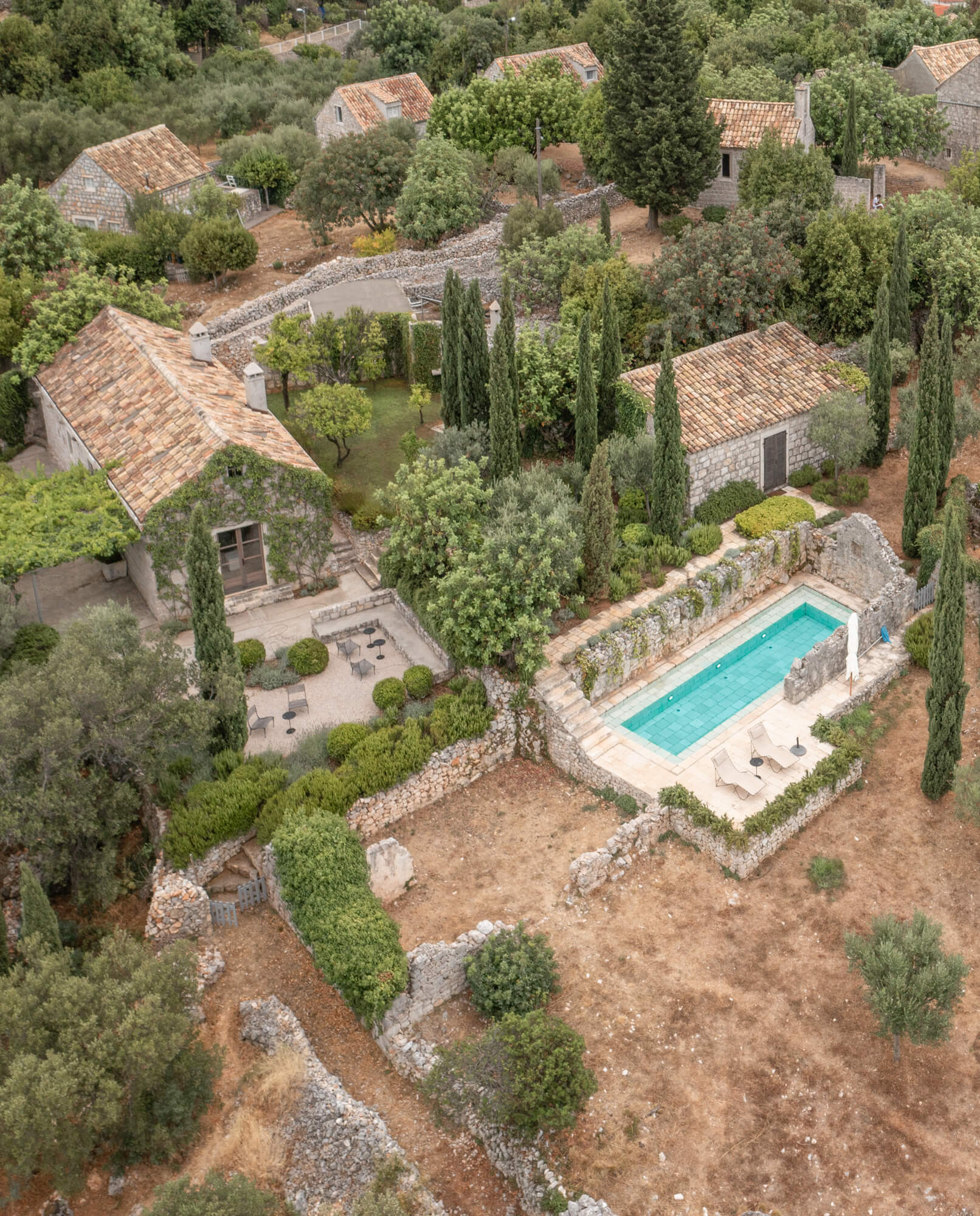
Lopud Island (Photo: Timotej Gošev)
Finally, are you planning to ever move to Croatia permanently?
If you ask me, “Timotej, would you like to live in Croatia one day?” The answer is obviously going to be a definite yes, yes I would. However, I wouldn’t want to live there throughout the whole year. I can see myself living there between April and October. I’m the type of person who dreams of having multiple homes. At least two in two different countries. But in life, you should also never say never. If the right opportunity arises, who knows, I might end up living in Croatia all year long. Living there would give me the chance to photograph Croatia during all the seasons, and not just summer.
For everything you need to know before planning your next summer vacation in Croatia and all these magical destinations shown in this article, be sure to check Timotej's Instagram account and our new guide to everything Croatia, Total Croatia, here.
If you don't have Instagram, follow him on Facebook.
For more on lifestyle, follow TCN's dedicated page.
For more about Croatia, CLICK HERE.
New Ryanair Zadar Summer Flights, Blue Air Bucharest Flights to Dubrovnik, Split
November 13, 2021 - The latest flight news to Croatia as Ryanair Zadar summer flights and Blue Air flights from Bucharest to Dubrovnik and Split have been announced.
As the summer flight schedule is slowly being announced, more routes to Croatia have gone on sale, including to Zadar Airport, reports Croatian Aviation.
New Ryanair summer flights include:
Zadar - Nuremberg - Zadar, from March 29, 2022, twice a week, every Tuesday and Saturday until the end of October,
Zadar - Stockholm Arlanda - Zadar, from March 27, 2022, twice a week, every Wednesday and Sunday, until the end of October,
Zadar - Turin - Zadar, from March 28, 2022, twice a week, every Monday and Friday, also until the end of October.
These new lines will offer almost 70 thousand seats from the end of March to the end of October next year.
Nuremberg will also be Ryanair's ninth destination in Germany from Zadar (along with Berlin, Bremen, Cologne, Dusseldorf Weeze, Frankfurt, Hamburg, Karlsruhe, and Memmingen), and Stockholm will be the third in Sweden (existing lines to Vaxjo and Gothenburg).
Currently, 39 international Ryanair routes are on sale to and from Zadar Airport.
In addition to the lines to Zadar, Ryanair operates on year-round lines to Zagreb, and next summer, it will be present in Pula, Rijeka, Split, and Dubrovnik.
Furthermore, Croatian Aviation reports that Romania's low-cost airline, Blue Air, announced two scheduled flights to Croatia in the 2022 summer flight schedule.
Namely, Blue Air has announced seasonal routes to Split and Dubrovnik.
The Romanian low-cost airline operated mainly on charter routes to Croatia in the summer flight schedule this year, specifically to Dubrovnik, with ad-hoc arrivals to other Croatian airports. The airline is now announcing regular operations to Dubrovnik and Split from the Romanian capital.
Bucharest - Split - Bucharest will run from June 23 to September 29, 2022, twice a week, every Thursday and Sunday,
Bucharest - Dubrovnik - Bucharest will operate from June 28 to September 27, 2022, every Tuesday and Saturday, also twice a week.
The airline plans to operate on ad-hoc charter flights to Croatia next summer, mainly for Romanian tour operators selling holiday packages in Istria and the central Adriatic. Blue Air will thus operate on charter flights to Pula and Zadar airports.
When asked about introducing a regular line to Zagreb, Blue Air points out that they are considering several destinations, including the Croatian capital.
Until the beginning of the global pandemic, Croatia Airlines operated three times a week (Mondays, Wednesdays, and Fridays) between Zagreb and Bucharest in the summer flight schedule. The line was introduced in May 2017 and was in operation every summer until 2020. It is unknown whether Croatia Airlines will resume operations between Bucharest and Zagreb in the summer of 2022.
In addition to two new lines from Split and Dubrovnik, Zadar will also have a regular connection to the Romanian capital. Ryanair will continue to operate between Zadar and Bucharest next summer, twice a week, on Wednesdays and Saturdays, from March 30 to October 29, 2022.
For more on flights to Croatia and other travel announcements, make sure to check out our dedicated travel section.
Wow! Comparing Split, Dubrovnik Winter Flights to ExYu, Mediterranean Competition
November 8, 2021 - How do Split and Dubrovnik winter flights compare to other cities in the region, as well as competitor destinations on the Mediterranean. Quite interesting...
I am just back from a couple of trips to the Adiatic coast in October and November.
So much beauty, such a great time to visit.
And yet...
Split and Dubrovnik winter flights are as scarce as summer flights are abundant, and the whole Dalmatian coast largely goes to sleep from the end of October until March.
It was not always that way, as we learned in a recent TCN interview with a UK tour rep in the 1980s, who explaine how year-round flights were bringing in Americans for stays of up to 6 weeks. Read more in Croatian Winter Tourism in 1990: Full of Life! Tour Rep Interview.
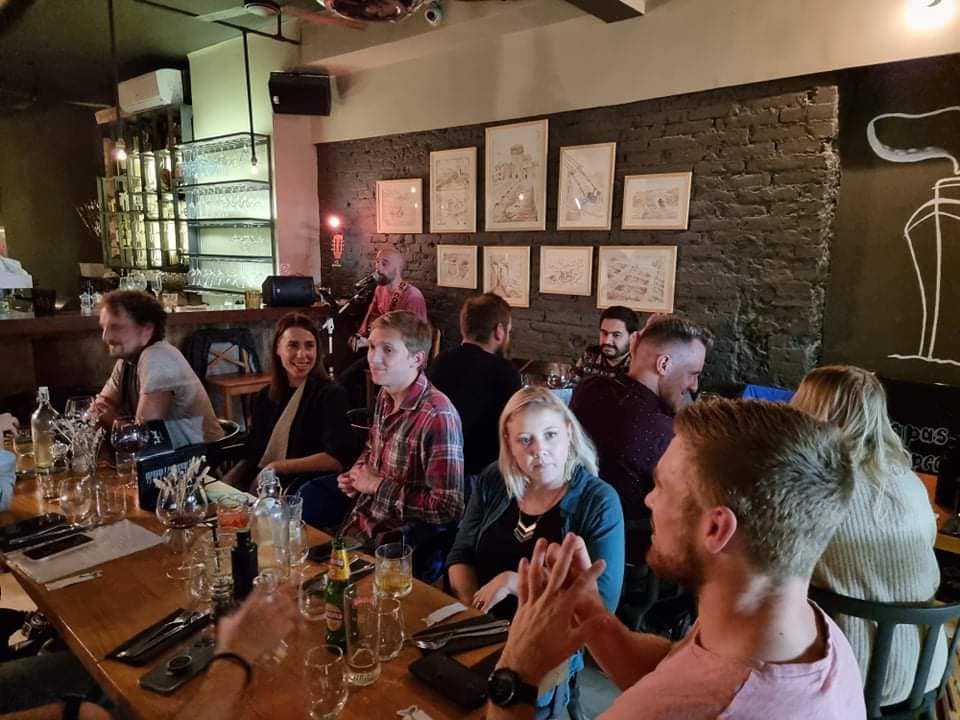
And yet, there are pockets of the coast which are very much alive in the winter months. Small initiatives that show there are people here - and the feeling that many more would come if the likes of Split and Dubrovnik were more accessible. Above is a photo from Nomad Table in Split on Friday night, a weekly event hosted by Saltwater Nomads and Zinfandel in Split. It was packed and sold out - again. I spoke to several remote workers who are enjoying Split as their temporary new home. More flights and easier access, combined with a proper strategy would increase their numbers considerably.
After writing a few articles on the potential of winter tourism recently, I asked if there was anyone with something to contribute on the subject who would be interested in getting in touch to kickstart an initiative to improve the Split and Dubrovnik winter flights situation.
Among the many who get in touch was tourism consultant Mario Seric, who was actively involved in a concerted effort with Split's hotels to bring more flights to the city a decade ago. Although the main initiative was ultimately not a success, there were some wins, including the Split to Munich flight, which continues today.
I met Mario in Split over the weekend for a beer or three, and was not only deeply impressed by his intimate knowledge of the subject, but also just how badly served Split and Dubrovnik are when compared to the neighbours and competition.
Although comparing Split and Dubrovnik winter flights to other Ex-Yu destinations is not a like for like comparison, it serves as a useful indicator of their position in the region in this regard. And when one compares to similar destinations in the Mediterranean, that is where things get a little shocking - for me at least.
I asked Mario to send me some data on winter flights in terms of numbers of flights a week, number of airports served, and number of countries connected. This is what he sent me.
I am sending the basic airport info as well as main information for the winter 2021/2022 timetables for direct scheduled flights for 9 selected airports that I have chosen based on the following criteria:
- I exclude big Mediterranean metropolises such as Madrid, Barcelona, Rome, Athens, and Istanbul;
- I also exclude some other big Mediterranean cities such as Malaga, Valencia, Marseille, Naples, and Izmir;
- I also exclude island cities such as Palma de Mallorca, Cagliari, Palermo, Catania, Heraklion, etc.
- I include mid-size Mediterranean cities with established or emerging tourism industries such as Alicante, Nice, Venice, Bari, and Thessaloniki (for serious comparisons);
- I also include some cities in the Western Balkans that are not comparable at all such as Banja Luka, Tuzla, Niš, and Ohrid (for fun).
I would also like to point out that the information below for the winter 2021/2022 timetable is the latest official info from the airports and the airlines, but this is constantly changing, especially nowadays during the pandemic (even on a daily basis).
ALICANTE-ELCHE AIRPORT
Basic Airport Info
- Serving Alicante, Elche, and Costa Blanca
- Passenger traffic in the year before pandemic (2019): 15.048.240
- No. 5 airport in Spain by passenger traffic (after Madrid, Barcelona, Palma de Mallorca, and Malaga)
Winter 2021/2022 Timetable for Direct Scheduled Flights
- Number of airlines: 29
- Number of routes: 167
- Number of airports: 105
- Number of countries: 24
- Top airlines by the number of routes: Ryanair (64), Vueling (19), easyJet (11), Jet2.com (9), Norwegian (8), Wizz Air (8), etc.
- Top countries by the number of routes: UK (46), Spain (21), Germany (12), Norway (11), Belgium (9), Netherlands (9), Italy (8), France (7), etc.
NICE COTE D'AZUR AIRPORT
Basic Airport Info
- Serving Nice, Cannes, and French Riviera
- Passenger traffic in the year before pandemic (2019): 14.485.423
- No. 3 airport in France by passenger traffic (after Paris Charles de Gaulle and Paris Orly)
Winter 2021/2022 Timetable for Direct Scheduled Flights
- Number of airlines: 43
- Number of routes: 113
- Number of airports: 78
- Number of countries: 33
- Top airlines by the number of routes: easyJet (27), Air France Hop (10), Wizz Air (8), Air Corsica (4), Norwegian (4), Transavia (4), Volotea (4), etc.
- Top countries by the number of routes: France (29), UK (12), Germany (5), Italy (5), Spain (5), Tunisia (5), Netherlands (4), Russia (4), Switzerland (4), etc.
VENICE MARCO POLO AIRPORT
Basic Airport Info
- Serving Venice and Padua (also Treviso, but it has its own airport with quite strong business)
- Passenger traffic in the year before pandemic (2019): 11.561.594
- No. 4 airport in Italy by passenger traffic (after Rome Fiumicino, Milan Malpensa, and Bergamo)
Winter 2021/2022 Timetable for Direct Scheduled Flights
- Number of airlines: 37
- Number of routes: 75
- Number of airports: 55
- Number of countries: 26
- Top airlines by the number of routes: easyJet (14), Volotea (11), Wizz Air (9), Ryanair (6), etc.
- Top countries by the number of routes: Italy (16), France (14), UK (8), Germany (5), Spain (5), etc.
BARI KAROL WOJTYLA AIRPORT
Basic Airport Info
- Serving Bari, northern and central parts of Apulia region
- Passenger traffic in the year before pandemic (2019): 5.545.588
- No. 11 airport in Italy by passenger traffic
Winter 2021/2022 Timetable for Direct Scheduled Flights
- Number of airlines: 14
- Number of routes: 76
- Number of airports: 56
- Number of countries: 18
- Top airlines by the number of routes: Ryanair (37), Wizz Air (19), Volotea (4), etc.
- Top countries by the number of routes: Italy (31), Germany (8), France (5), Spain (5), Poland (4), Romania (4), etc.
THESSALONIKI MAKEDONIA AIRPORT
Basic Airport Info
- Serving Thessaloniki and central Macedonia (including Chalkidiki peninsula)
- Passenger traffic in the year before pandemic (2019): 6.895.331
- No. 3 airport in Greece by passenger traffic (after Athens and Heraklion)
Winter 2021/2022 Timetable for Direct Scheduled Flights
- Number of airlines: 18
- Number of routes: 80
- Number of airports: 57
- Number of countries: 23
- Top airlines by the number of routes: Ryanair (26), Aegean (15), Sky Express (8), Olympic Air (7), Wizz Air (6), Eurowings (4), etc.
- Top countries by the number of routes: Greece (20), Germany (19), Cyprus (4), Italy (4), Russia (4), UK (4), etc.
BANJA LUKA AIRPORT
Basic Airport Info
- Serving Banja Luka and northwestern Bosnia and Herzegovina
- Passenger traffic in the year before pandemic (2019): 149.693
- No. 3 airport in Bosnia and Herzegovina by passenger traffic (after Sarajevo and Tuzla)
Winter 2021/2022 Timetable for Direct Scheduled Flights
- Number of airlines: 3
- Number of routes: 14
- Number of airports: 14
- Number of countries: 8
- Airlines by the number of routes: Ryanair (7), Wizz Air (6), Air Serbia (1)
- Countries by the number of routes: Germany (4), Sweden (4), Austria (1), Belgium (1), Italy (1), Netherlands (1), Serbia (1), Switzerland (1)
TUZLA AIRPORT
Basic Airport Info
- Serving Tuzla and northeastern Bosnia and Herzegovina
- Passenger traffic in the year before pandemic (2019): 593.083
- No. 2 airport in Bosnia and Herzegovina by passenger traffic (after Sarajevo)
Winter 2021/2022 Timetable for Direct Scheduled Flights
- Number of airlines: 1
- Number of routes: 14
- Number of airports: 14
- Number of countries: 6
- Airlines by the number of routes: Wizz Air (14)
- Countries by the number of routes: Germany (8), Sweden (2), Austria (1), Denmark (1), Netherlands (1), Switzerland (1)
NIŠ CONSTANTINE THE GREAT AIRPORT
Basic Airport Info
- Serving Niš and southern Serbia
- Passenger traffic in the year before pandemic (2019): 422.255
- No. 2 airport in Serbia by passenger traffic (after Belgrade)
Winter 2021/2022 Timetable for Direct Scheduled Flights
- Number of airlines: 4
- Number of routes: 12
- Number of airports: 11
- Number of countries: 7
- Airlines by the number of routes: Wizz Air (5), Ryanair (4), Air Serbia (2), Swiss (1)
- Countries by the number of routes: Germany (3), Austria (2), Sweden (2), Switzerland (2), Italy (1), Malta (1), Slovenia (1)
OHRID ST. PAUL THE APOSTLE AIRPORT
Basic Airport Info
- Serving Ohrid and western parts of North Macedonia
- Passenger traffic in the year before pandemic (2019): 317.218
- No. 2 airport in North Macedonia by passenger traffic (after Skopje)
Winter 2021/2022 Timetable for Direct Scheduled Flights
- Number of airlines: 2
- Number of routes: 9
- Number of airports: 9
- Number of countries: 6
- Airlines by the number of routes: Wizz Air (8), Edelweiss Air (1)
- Countries by the number of routes: Germany (3), Switzerland (2), Austria (1), Italy (1), Sweden (1), UK (1)
Concerning SPLIT AIRPORT, as you know it is the second busiest airport in Croatia (3,30 million passengers in 2019) and has very good connections in the summer timetable, but the winters have been disasters since I have been following this and for Winter 2021/2022 timetable Split Airport has 10 routes served by Croatia Airlines (Frankfurt, Munich, Rome, and Zagreb), Eurowings (Cologne Bonn, Dusseldorf, and Stuttgart), and Trade Air (Dubrovnik, Rijeka, and Pula / Osijek - it is the one flight that goes to Pula and then continues to Osijek). If you take away Croatian airports, Split is connected with only 6 other airports (5 in Germany and 1 in Italy).
Concerning DUBROVNIK AIRPORT, it is the third busiest in the country (2,90 million passengers in 2019) and has also very good connections in the summer timetable. For the last few winters it had slightly better connectivity than Split Airport, but this year it has only 4 routes served by Croatia Airlines (Zagreb), Trade Air (Split / Rijeka - one flight that goes to Split and then continues to Rijeka), Turkish (Istanbul), and Vueling (Barcelona).
Thanks Mario, very interesting statistics. I will be featuring more of Mario's findings in the near future. Mario is preparing some information for me about an initiative which started back in 2008, which was strongly supported by Split Airport and the bigger hotels (Le Meridien Lav, Radisson and later BlueSun), but sadly not by the relevant official bodies at the time. With the continued support of Split Airport and others joining the debate, could things be different this time?
If you are interested in joining an initiative to improve the Split and Dubrovnik winter flights situation and have something to contribute (please state what), then please contact This email address is being protected from spambots. You need JavaScript enabled to view it. Subject Winter Flights
What could life after Croatia Airlines look like is the struggling national carrier was no longer on the scene? A very interesting interview with some parallels with the CEO of Budapest Airport a few years ago on life after the demise of the Hungarian state carrier - Lessons from Budapest Airport: CEO Jost Lammers on Life After Malév.
Miso Mihocevic Discusses War Memories, Dubrovnik, Potential for Book
November the 5th, 2021 - Dubrovnik, known today (at least before the pandemic) as Croatia's tourism Mecca plagued by crowds and cruise ships, was once under threat by something much more sinister - Serbian-Montenegrin aggression. Back in the 90s, it wasn't the flashes of cameras striking the famous UNESCO protected city, but hundreds of grenades. Miso Mihocevic is often referred to as a war hero, and this former translator/interpreter and negotiator's emotions towards those difficult times haven't dulled even 30 years on.
As Dubrovniknet/Lidija Crncevic writes, not for one second did Miso Mihocevic consider packing his bags, abandoning his city and removing his life from danger as Dubrovnik began being attacked, even though the smell of war was very much lingering in the air.
He could have quite easily left the city, he had his connections and ties. He could have gone anywhere and continued living a safe and quite normal life. He didn't. He stayed. He got involved in defending the country and city from the marauding Serbs in the best possible way he knew how. He was a negotiator, a translator, an interpreter... he often had to store away his emotions and wrap them tightly in a thick proverbial piece of rope in order to retain composure and behave in a diplomatic way when dealing with various representatives of the aggressor army.
''You know what you need to say'' Commander Nojko would tell him when they were heading towards occupied Cavtat, the southernmost town in the country. When the Croatian team of negotiators went down to Cavtat to engage in negotiations, they could never know for sure whether they would return to the City of Dubrovnik or whether the Serbs would "redirect" them to the infamous Morinj. We look back 30 years ago in Dubrovnik's history with Miso Mihocevic, going back to the beginnings.
You made your choice to stay in the city, although, objectively speaking, you could have gone elsewhere, perhaps abroad, and continued with life as you'd known it...
Actually, I'd returned to Dubrovnik a few years before any of these dark times began. after a dozen or so very easy years spent abroad in high fashion and of course mingling among fashion circles. I was young, I had my health, and I was good looking. Could it be better?! Well, actually... Yes, it could! What was missing? Something was... something very big. An invisible piece of me. A piece of a more complete and fulfilled version of myself where I'm not a stranger, not foreign... in a place where despite all the good times, you'll never really fully integrate, not completely.
"The sun of another's sky" is a terribly thorough and precise conclusion and description of that feeling. It's a well-known ''condition'' for which we have a very nice and accurate word: homesickness. I mean, I lived quite well, but the sun still didn't warm my bones up like the one which beats down on Banje beach does, allegorically and in reality. Being complete, fulfilled, recognising and understanding your society and its forces is the true kind of most often totally unconscious type of love. It's immeasurable. It was easy for me because I had the most beautiful lover - Dubrovnik.
A career or love? I was lucky as I had both, I expressed myself relatively quickly through the Dubrovnik Summer Festival (where I spent all my summers from the age of fifteen). That's how much love there was. With another extremely important element, I'm the type of person you can say anything to, but to insinuate that I'm not a Croat or, even worse, that I must be ashamed of being one... I'd never been able to stand that, even from a very young age. The reaction in me when I hear something like that is instant rage.
To escape meant only an escape from oneself, not from those toothless Chetniks. Not only to be left without everything, but also to be left with some eternally unhappy room under someone else’s sun that doesn’t warm me up in the same way.
Today, 30 years after the start of the war in Dubrovnik, you're not in the city, where are you now, what are you doing, why did you decide to go?
I'm in Zagreb, quite happily and comfortably retired, I work in translation on my own watch when I feel like it, I recently finished translating a very interesting book into English, I write articles from time to time for Total Croatia News, I haven't been in any commercials lately as was the norm until the world changed, coronavirus isn't really allowing for any of that. But what's the most important thing of all - I'm the master of my time. I read, I browse the web, I like to be sarcastic on Facebook… Of course, there's always briskula (briscola). The days are short but never tiring or boring, because after so long, there's no dictation.
Why did I move out of the city? That's a good question. Back in 2010, Vlahusic, when he had freshly become Dubrovnik's mayor, kicked me out of the theatre (literally!) overnight (literally!) and left me on the street, so to speak, which I only found out about when reading a local portal the next day. Now, when hearing that, you'll surely think I'm furious, right? Quite on the contrary. I'd like to thank him because he saved me from the type of city it had become to allow such a mayor to ''take the throne''.
And a theatre, and I honestly do have to say this, for whom the first play after my removal - was a fantastic piece called ''Orchestra'' located in a Bosnian turbo cafe... Well, it isn't worth talking about. The worst sacrilege Bond experienced from 1862 to the present day. So... off I went to Zagreb, and I got a big role in a film, then in some commercials, etc.
So, Mr. Vlahusic, thanks again! I had been trying to do something in Dubrovnik as well, of course. For example, my friends and I raised about 2 million kuna over in England to return the opera to the Summer Festival after years - which they dropped the following season, and not because it was bad... There is an ever-present shitty ego, that shitty Croatian jealousy that many have come into contact with. It is all actively manifested through malice and meanness. Unfortunately, I had the opportunity to experience all of that even after Vlahusic. An employee of his, with all his internal issues and malice concluded that I'm angry and offended because I'm no longer the main cultural face of the city. The problem isn't in any kind of insult, but in the desperate fact that there's no other ''first person'' after me.
Behind you is a respectable war record… you were a negotiator, you were a translator, you had a lot of contact with foreign envoys in Dubrovnik. When it became clear to the international community what was happening in Croatia, that it wasn't merely a civil war, but the aggression of one country against another, was it difficult for you to deal with your nerves and emotions, to stay calm in the negotiations with the Yugoslav Army? What was the most demanding part of it all?
''There were certainly plenty of demanding tasks and demanding moments. Translation wasn't a problem, in fact, I asked a few of ''theirs'' to please step aside because I'd corrected them and asked them to please translate accurately, so I never saw some of them in those meetings again. At the legendary meeting on the ''Avenger'', the Serbian translator got something completely wrong, I insisted on a correction, he, logically, totally lost his mind about it, so one of their generals asked me to translate for them as well. The job of a liaison officer, on the other hand, often requires the need to try to cope in a very complicated situation on the spot. My dear Commander Nojko always said goodbye to me with ''you know what you’re going to say'', which sometimes made my head spin, from the effort and the awareness of the responsibility there was. It's a war, not a theatrical play.
The negotiations, almost until the recognition of the Republic of Croatia as an independent country, were the ultimate tests of the nerves, amplified by external factors such as burned down houses in Konavle, contorted faces and local Croatian people's eyes full of hope, waiting to see if they were allowed to be out on the waterfront in Cavtat when we came, and possibly then again when we left. You had to wrap your emotions up in a tight rope even when you felt like you were going to explode, then, self-control must be at its strongest. It doesn't come out of fear, when you're angry you aren't afraid, but out of the pure awareness that you have to be controlled in order to possibly get some result. Those first few months when they were quick, unstoppable and unruly, used to be just a ''test''- with the objective possibility that you would end up in Morinj that day instead of going back home.
What is your most traumatic experience from the war?
Overall, and at its core, everything is a huge trauma. It was a terrible school of life in which, however and despite all of the awful things, one can learn a lot about empathy and love for others. War is a struggle for life and death is built into its basic settings. Death was in the air when that psychopath, Captain Milan Zec, wanted to kill us in Cilipi near the airport runway, the upper edge of which was surrounded by with bearded, toothless Chetniks.
One's first encounter with what might come to be their own death is certainly not an empathic experience. Everything else I experienced from them would fall mostly into the "service life" and nothing more would be thought about it. By all accounts, I am an anti-Rambo guy who surprised himself when he realised, in the first days of the spread of Serbian culture, that the Chetniks weren't something he was afraid of at all, because of the reasons mentioned above, because I was furious. So, one cloudy day, some ununiformed people, who this time had a few more teeth between them, took us to the Hotel Epidaurus (Cavtat). And there in some big hallway, or some form of storage room for beach equipment, were our grandmothers, aunts, local Konavle women in costumes, lined up like logs next to each other on summer deckchairs. I ran outside, and I cried and cried. "They" must have rejoiced over the crying ''Ustasha''. No one had shot at me, but I had been hit in the heart.
How did you experience the recent departure of the representatives of the Dubrovnik and Konavle authorities to Morinj, and what are your feelings about the memorial plaque to Milan Milisic in Zupska street?
This visit to Morinj does make sense as a memorial and a little attention comes with it, perhaps as a small hope that a true historical memory could come to life there. We need to wait another generation, then we'll see. The memorial plaque to my friend Milan Milisic is, according to the Serbs, the worst monument of Serbian fascism.
The news from Croatia's surrounding countries is becoming more and more concerning and more and more aggressive - Montenegro and the swimming pool named after one of the villains from Morinj... Dodik wants to separate Republika Srpska, in nearby Trebinje Serbia is building an airport with Bosnia and Herzegovina…. where is all of this going to lead and are there any answers Croatia can provide in response to that?
I have the same impression I had from the census carried out back in 1991 when it seemed that there were at least 40 percent of ethnic Serbs in Croatia, as loud as they were, so it seems to me that this is the case in Montenegro today, that it is as dangerous as it was for us back then. I don't see a way out for them, even if they remember that they were ''brothers'' back in the 1990s, or even if they forget about it.
The Serbian obsession with their celestiality is of a genetic nature. They're much more alone than they seem and are constantly advancing in this. Because almost every day they have something for the public that in its essence serves to keep the government in power, all of them, including that irritated peasant from Banja Luka. The Serbian world, while the major of the Greater Serbia celestial armed detachments has a salary of a mere 400 euros, is busy building an airport in another country. The question is, what is this other country doing? Croatia can do a great deal if it gets rid of crime, corruption and other local phenomena, in order to become a respected EU member state, as well as one of NATO, and not be considered a ''poor Balkan territory''.
When you look back, what do you see as Croatia's biggest missed opportunity? Given the current situation…
''There perhaps hasn't even been a ''biggest missed opportunity'' because the people have never been offered one. The repeal of the Property Origin Act in 1990 was the last, not the first nail in the coffin, though.
Did you perhaps stay in touch with people, foreign envoys, friends of Croatia during the war?
Not too much, there are a few '‘Merry Christmas’' greetings here and there and mostly, some are no longer among us, as in everything, time changes us, opportunities take us away. And the war itself, as a factor of our acquaintances and friendships, is fading in active memory.
Have you ever told or revealed everything you saw or heard during the war in Dubrovnik, during the negotiations? Have you succumbed to the "temptation" that you might write a book. If you did write one, what genre would it be?
If I were to reveal literally everything, I'd need some very extensive format. I tell my friends when something reminds me of something from the war, without hesitation, it’s been harmless to me emotionally now for a long time. As for the book, I have a few people in my closest circle who keep nagging me to write a book. One of them would even sponsor a typist. I guess it’s worth it, that experience of war from that little-known standpoint, one from a non-combat angle. Maybe in some way I'm obliged to leave a mark in such a way and I do think about it here and there. I should enjoy this retirement-induced freedom a little less, it seems, and maybe start that famous "one day" project.
For more from Miso Mihocevic, you can follow him here and watch an interview between him and Borna Sor here.


